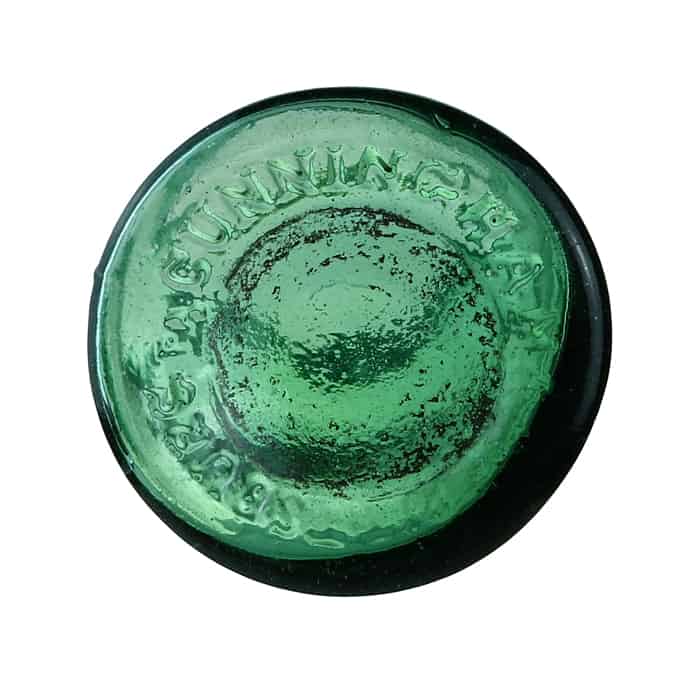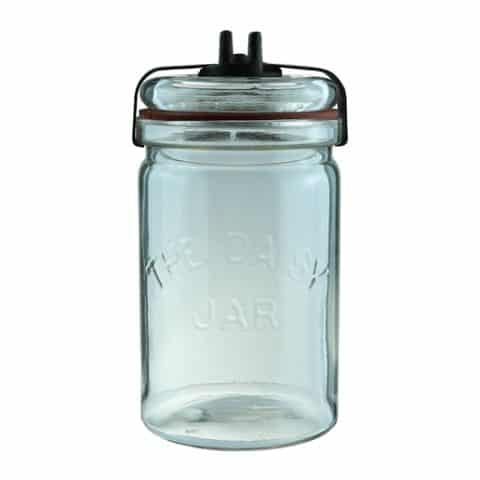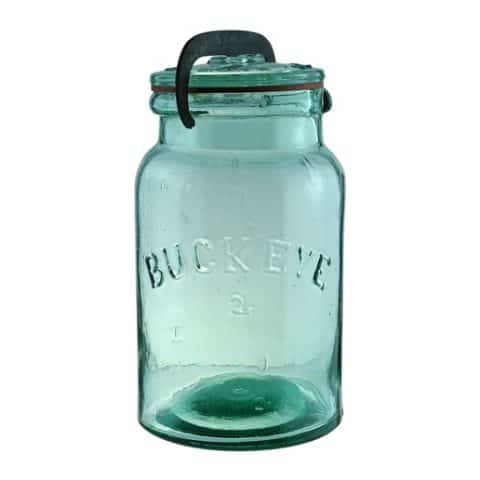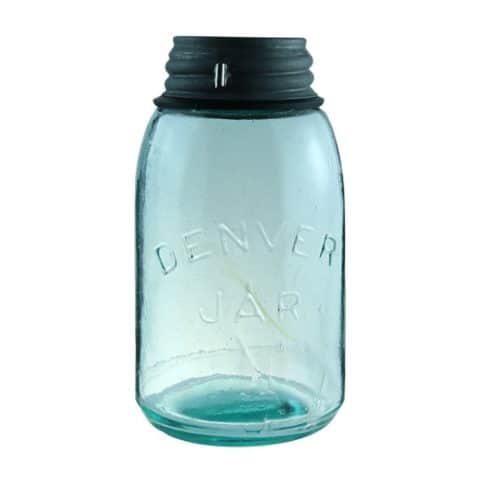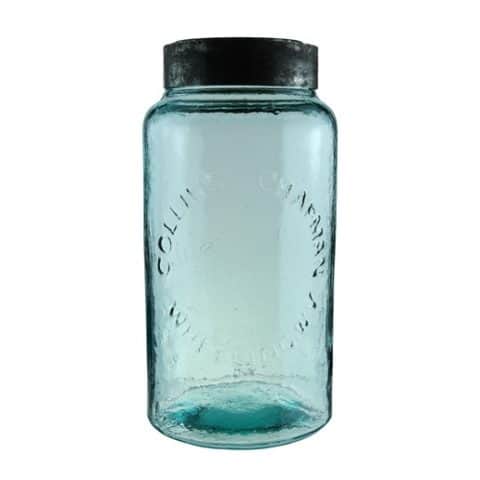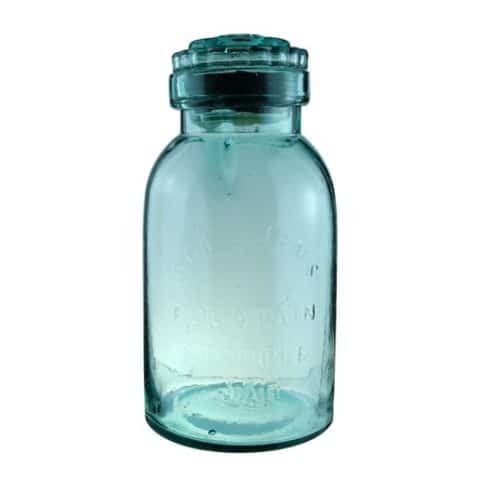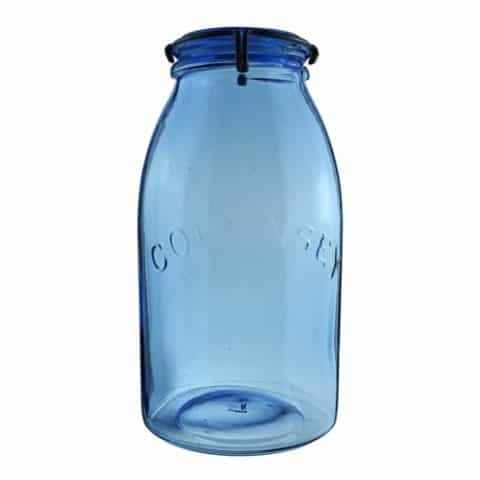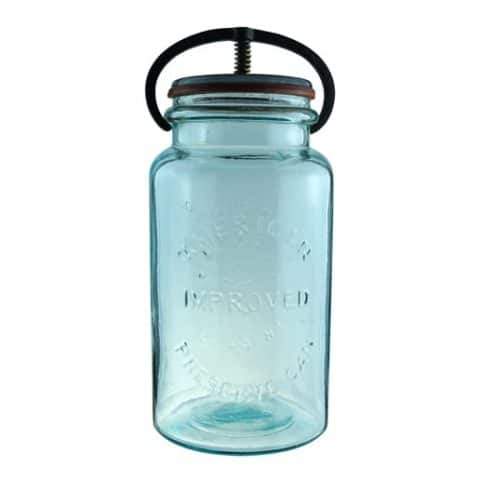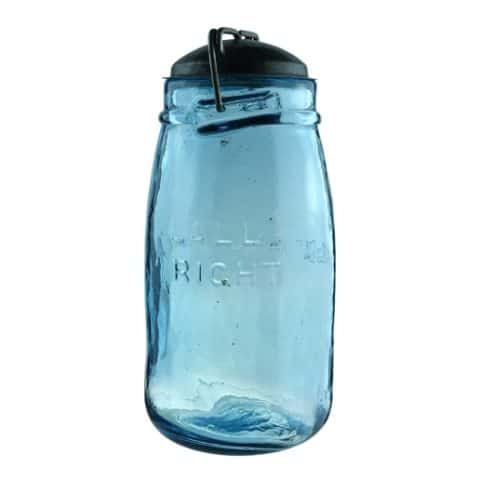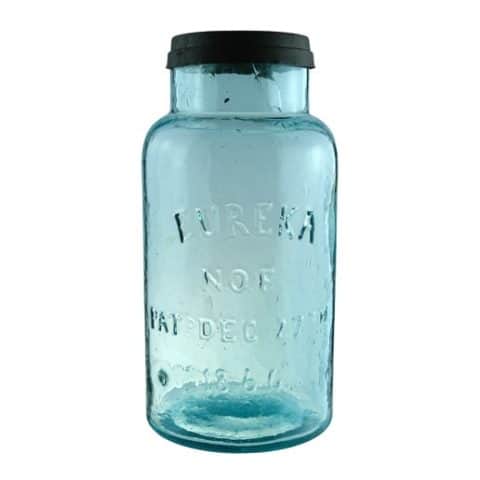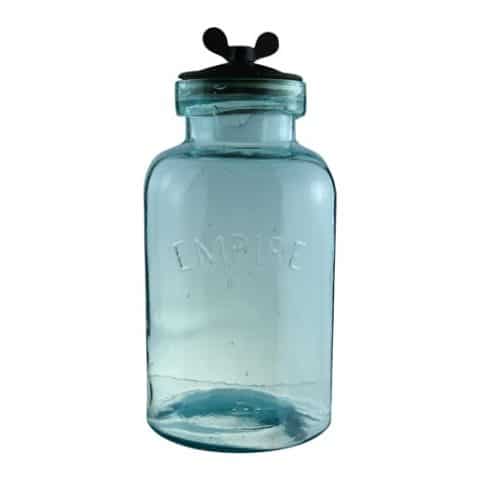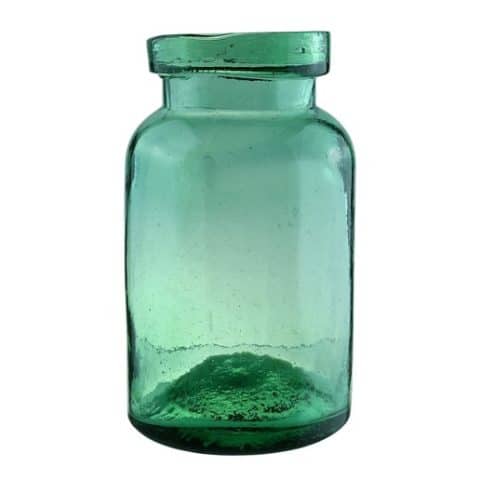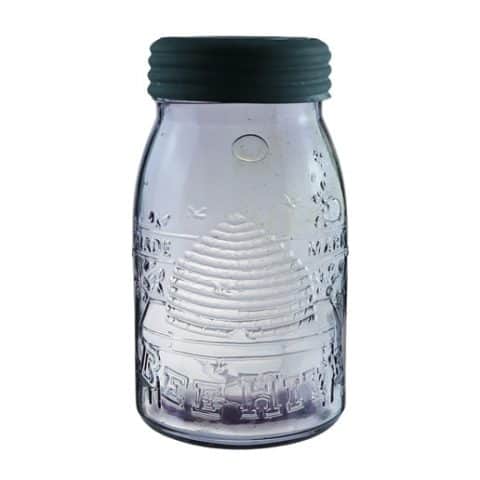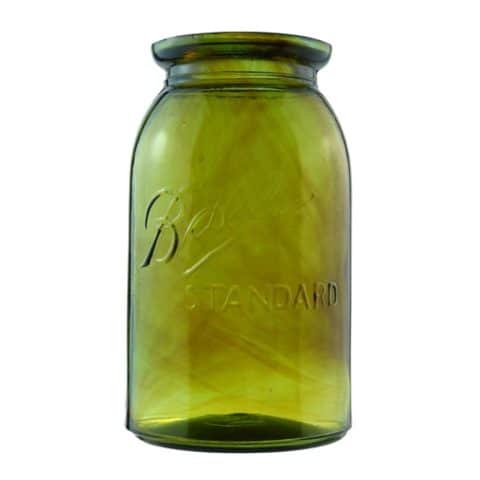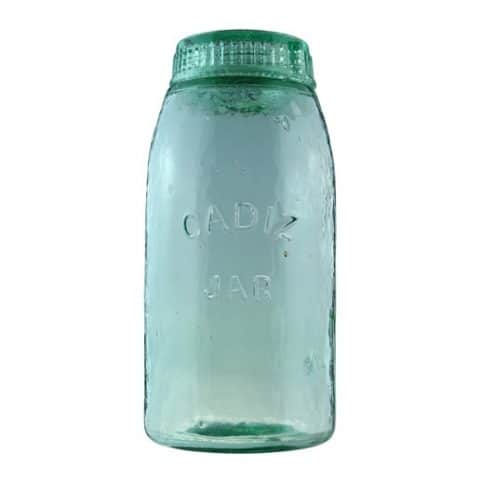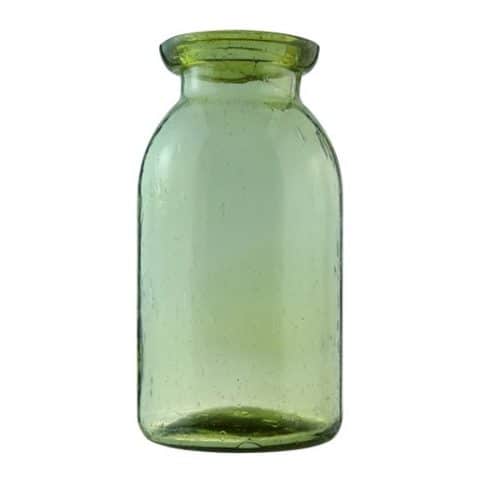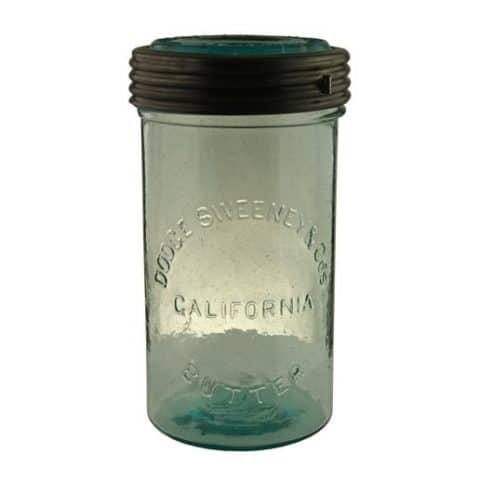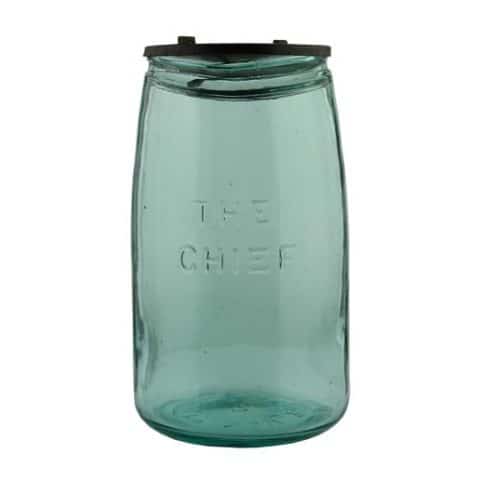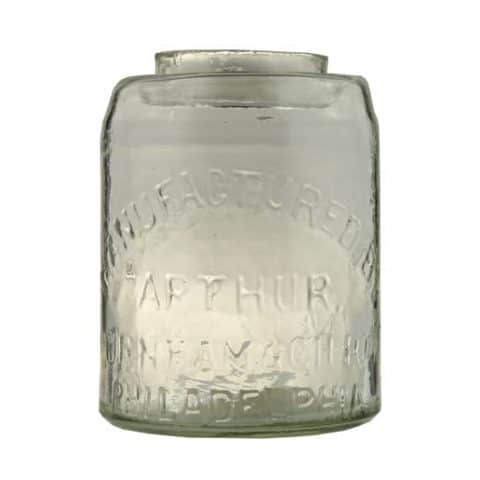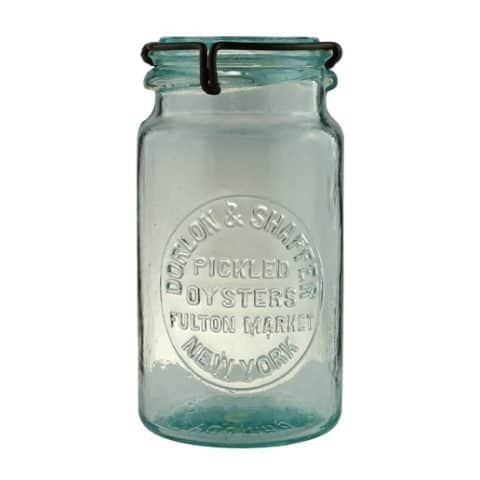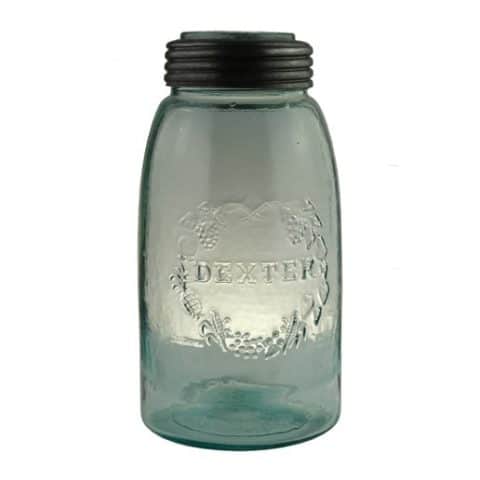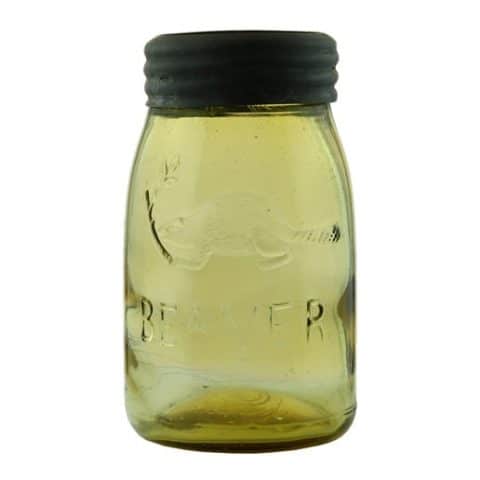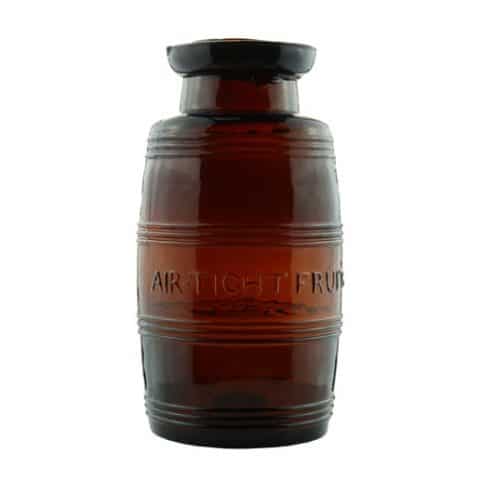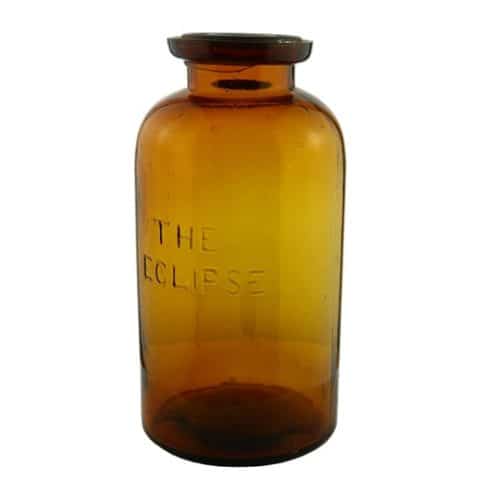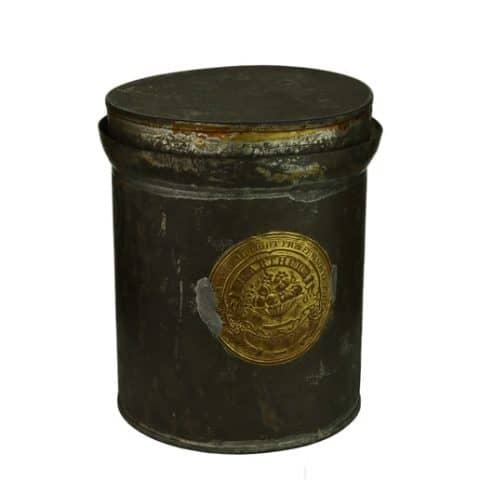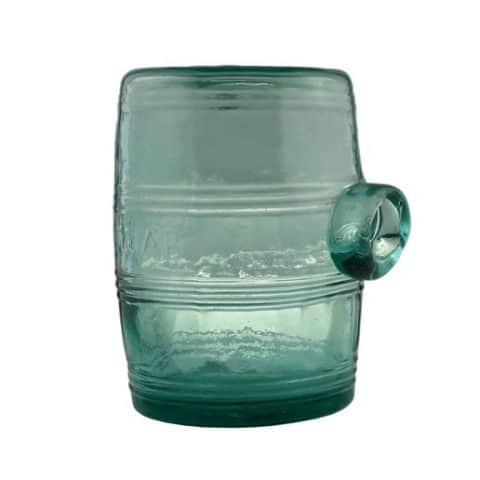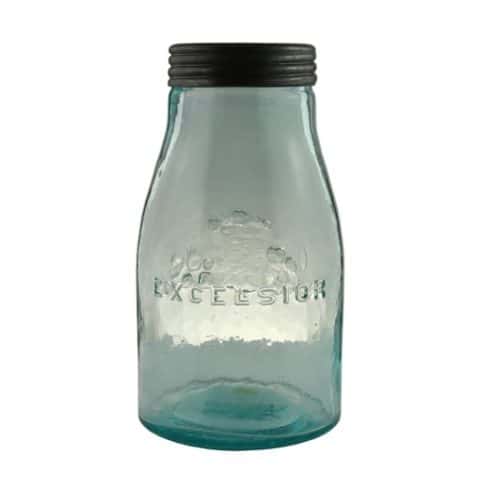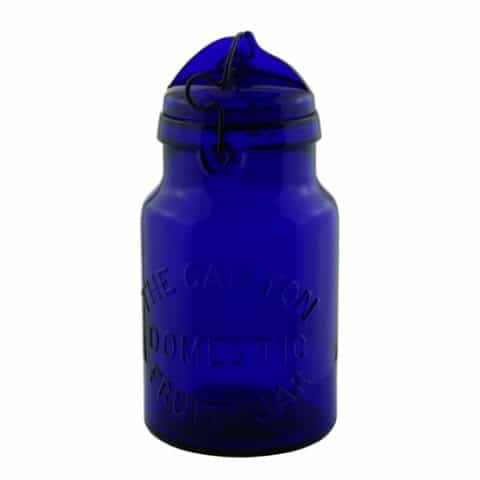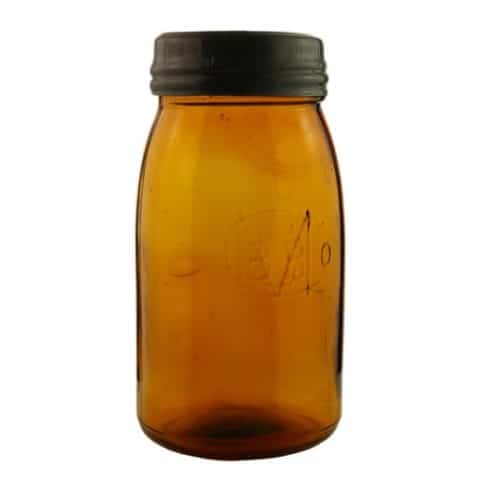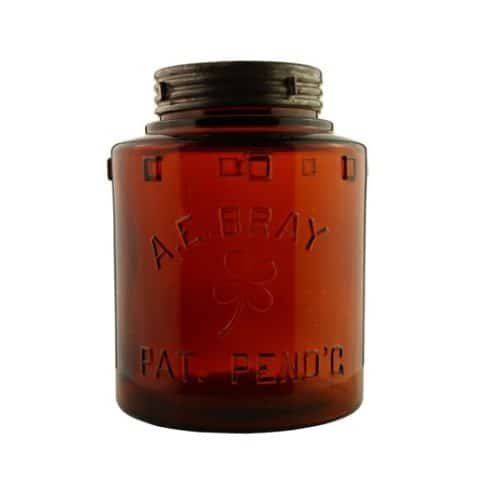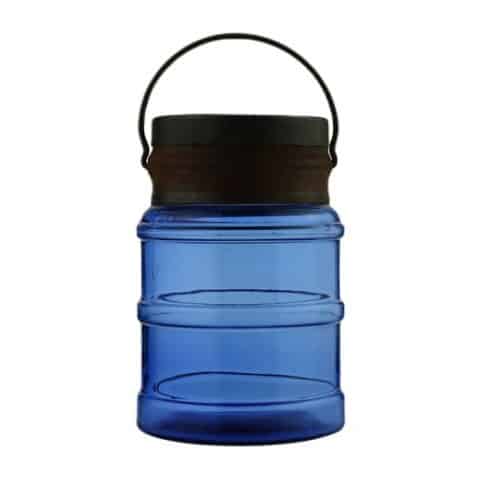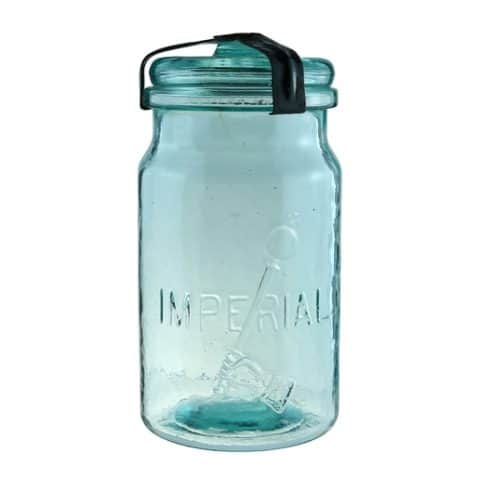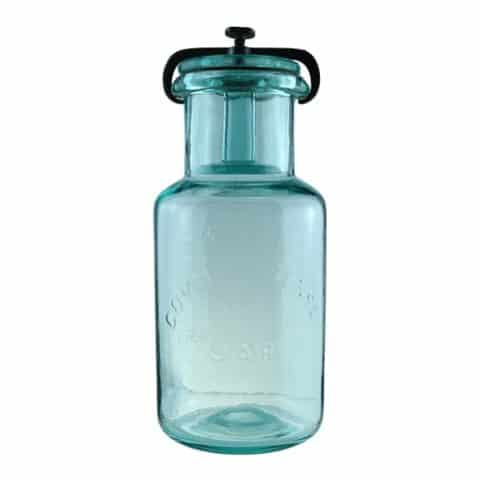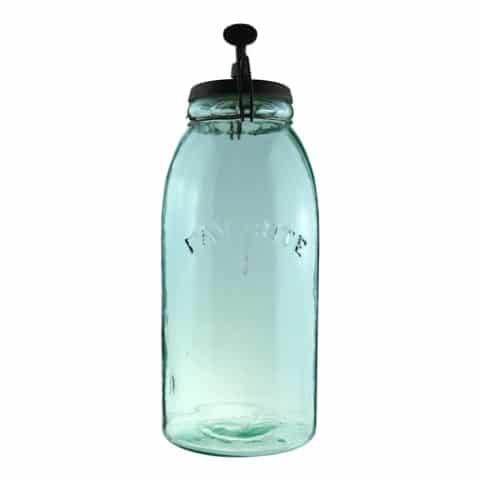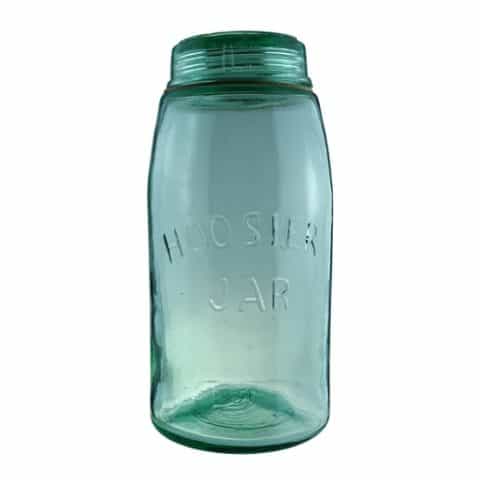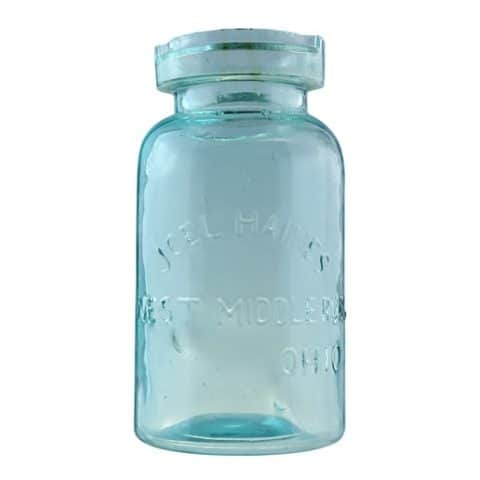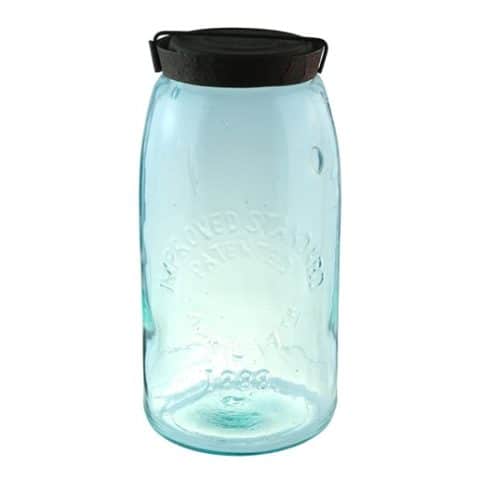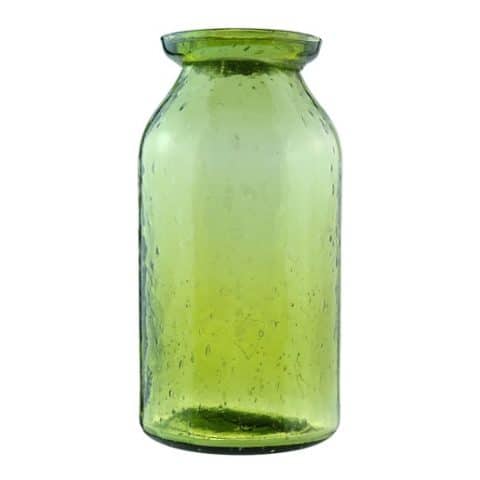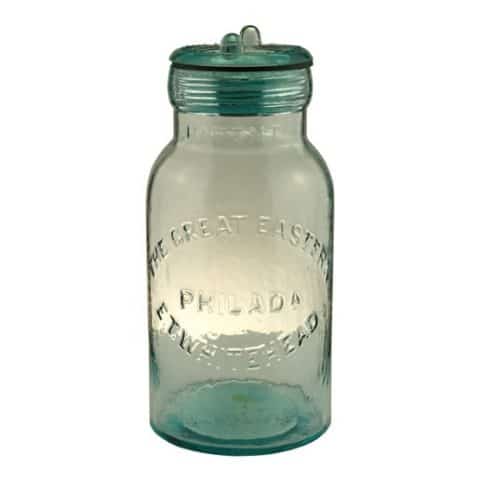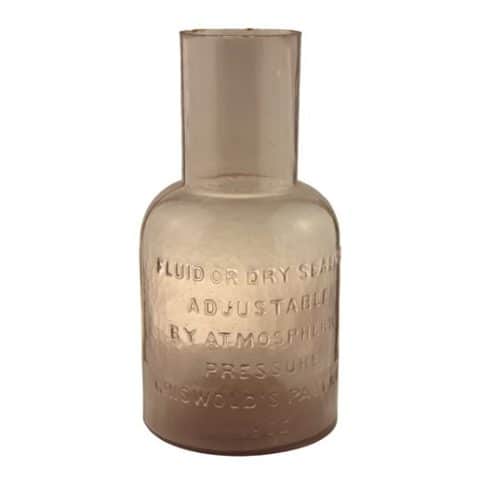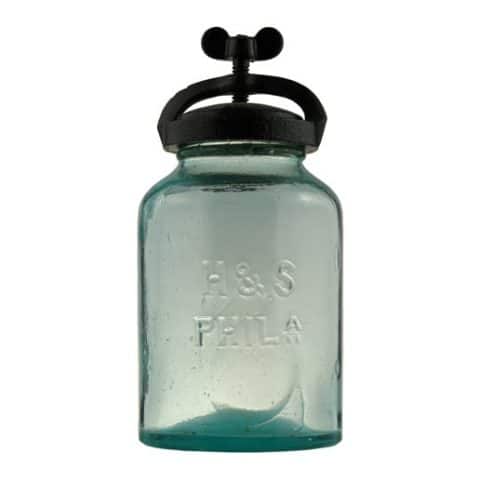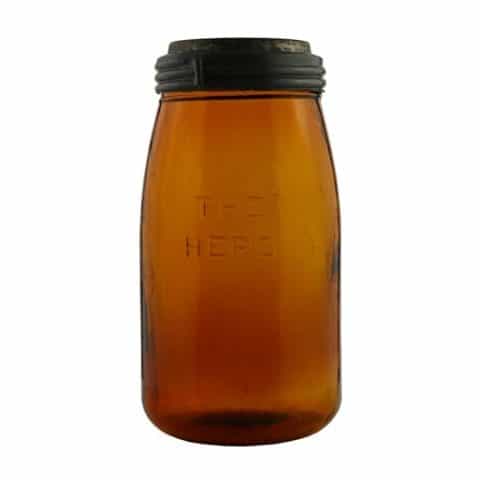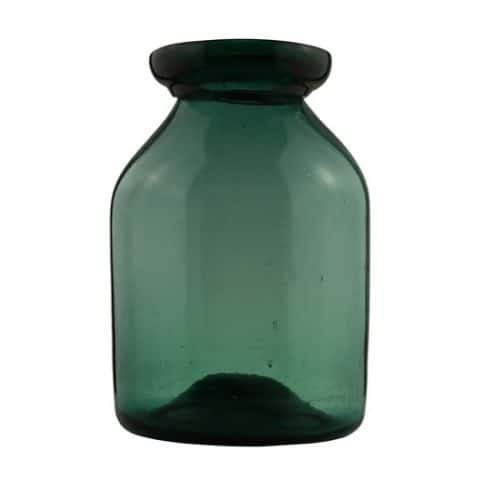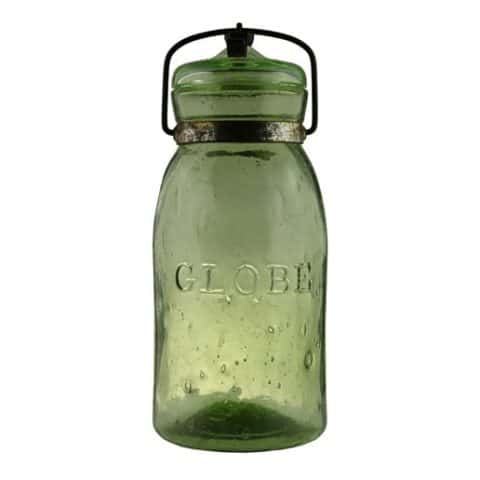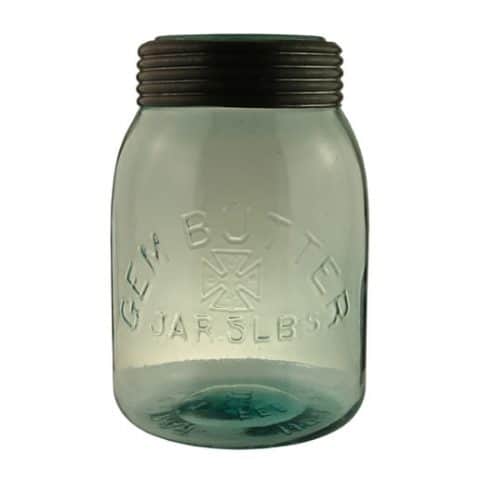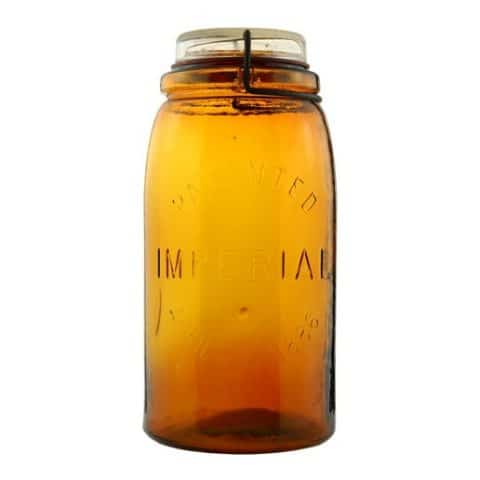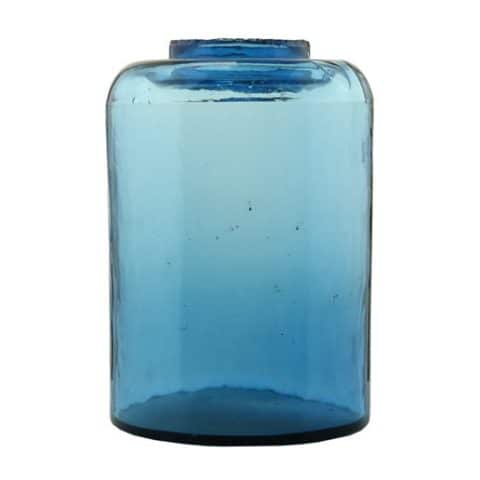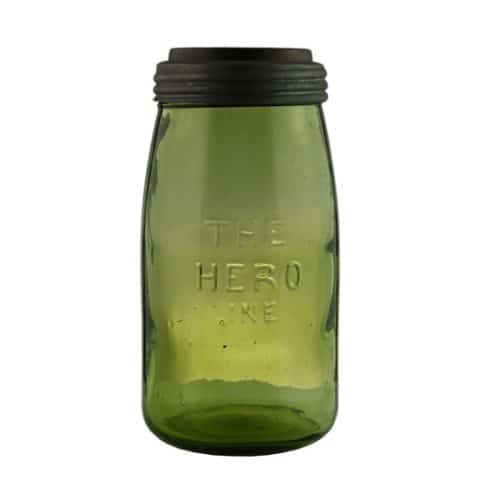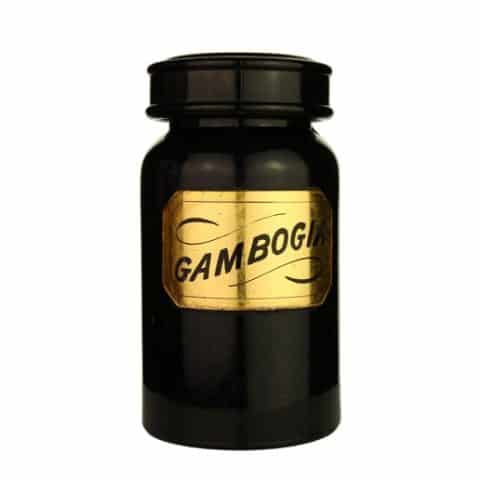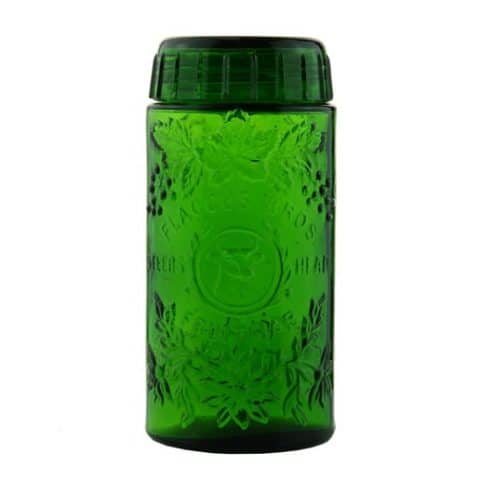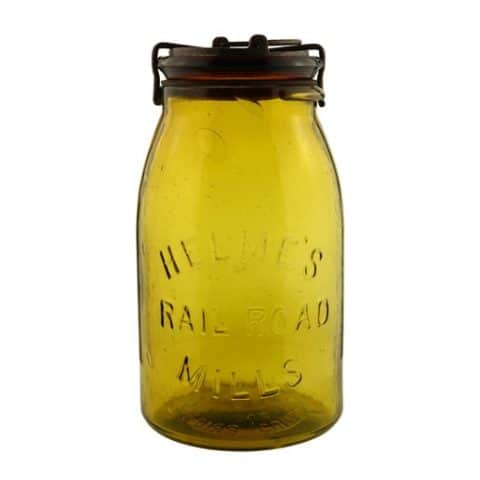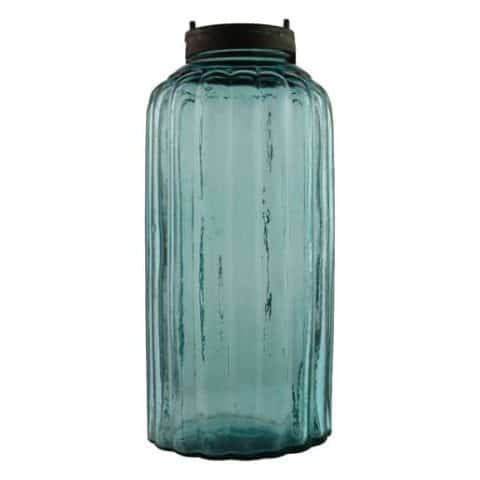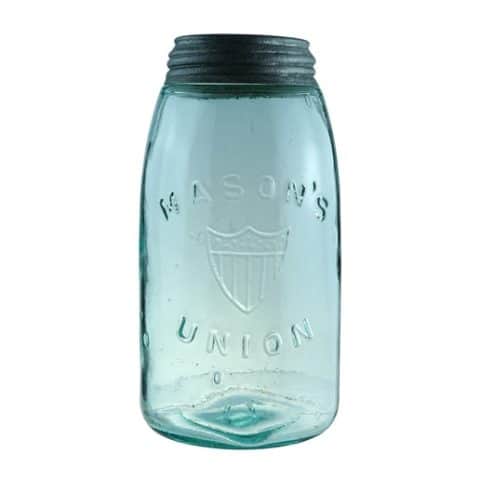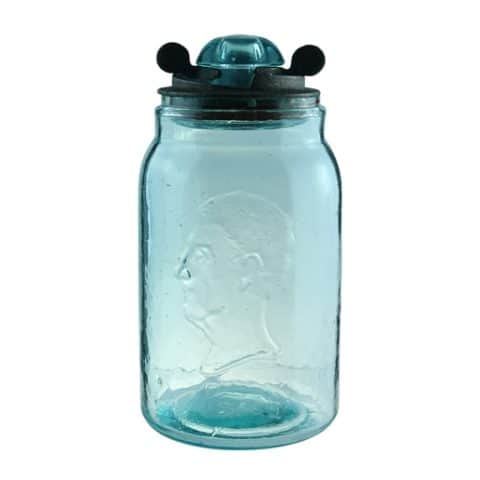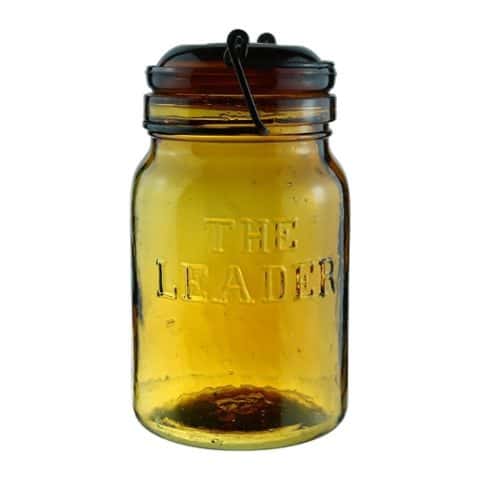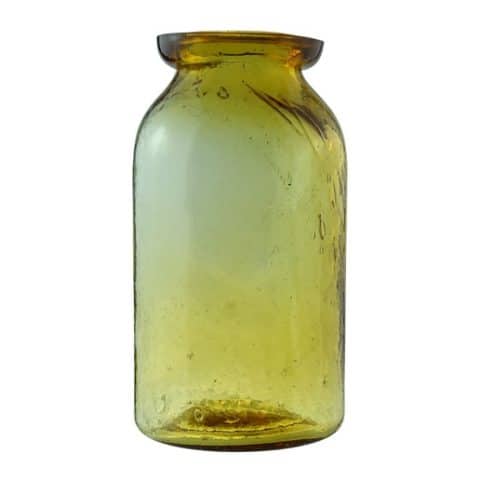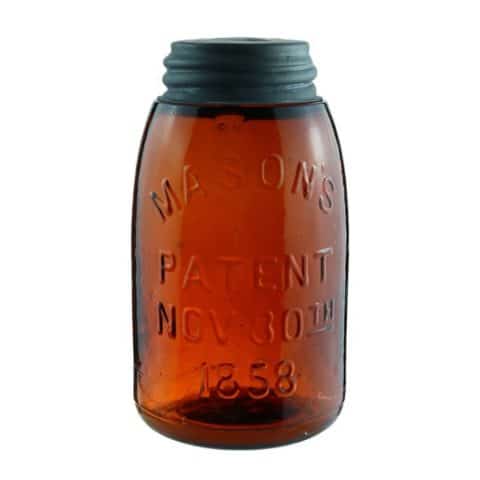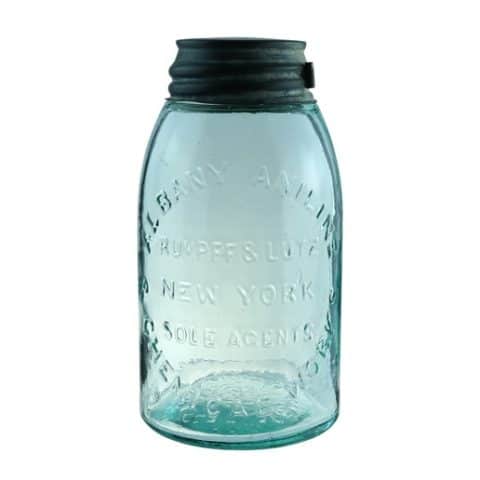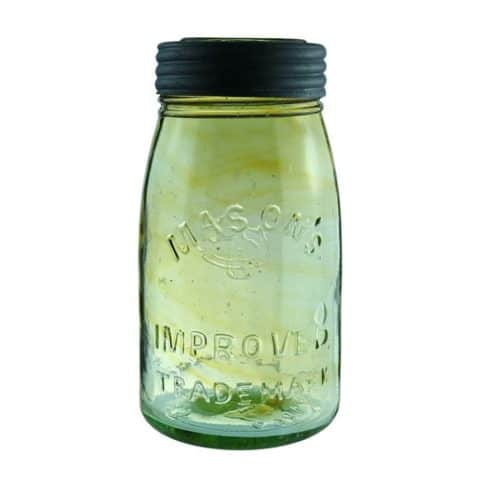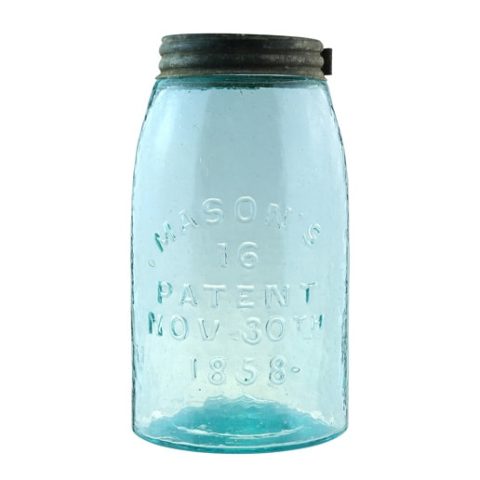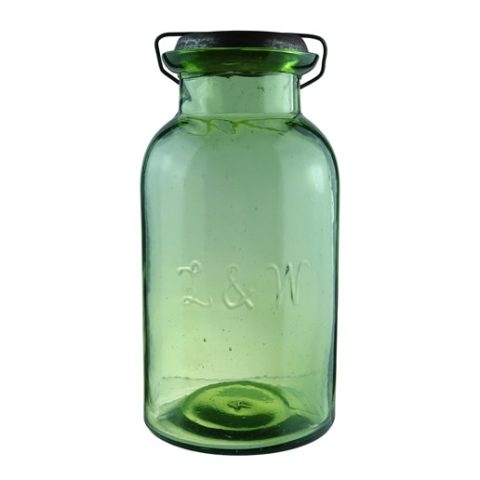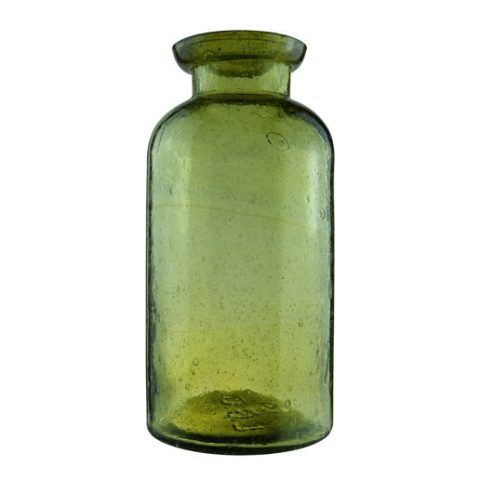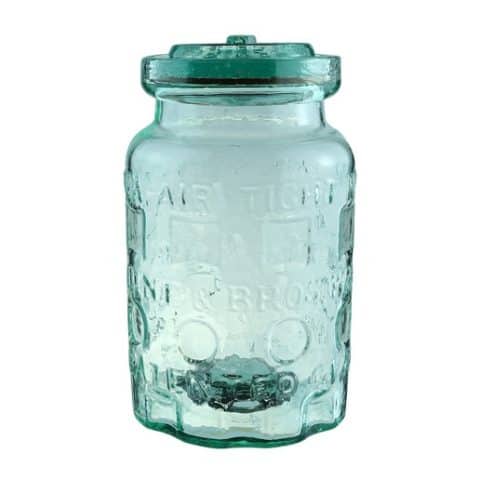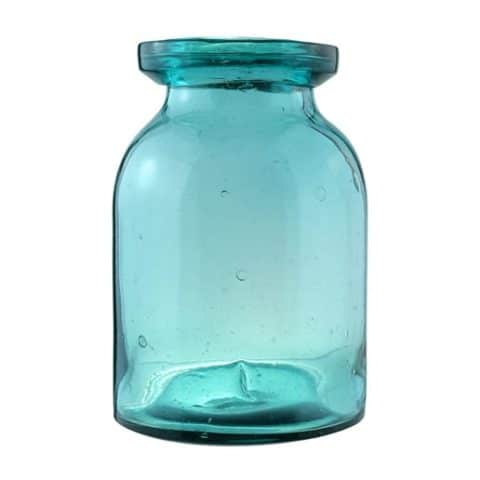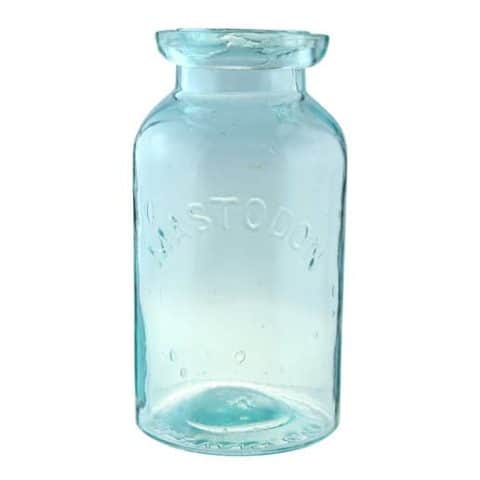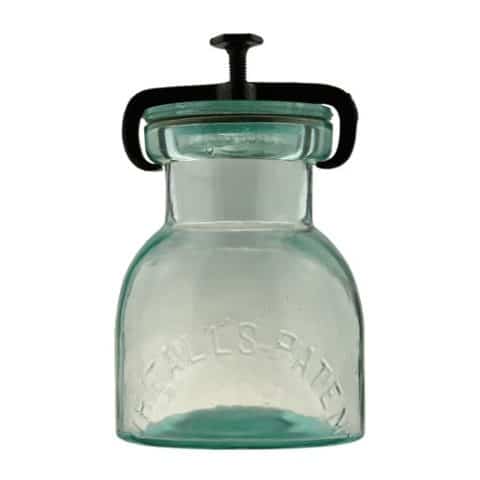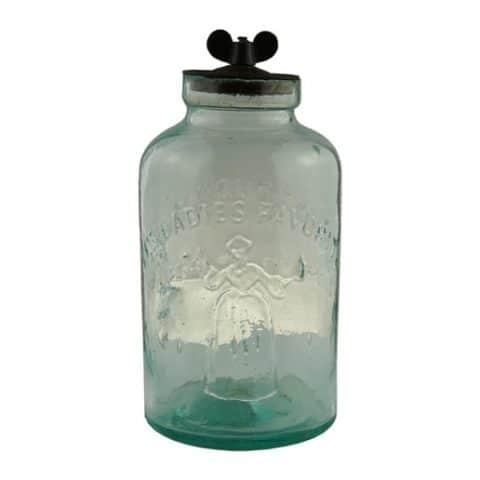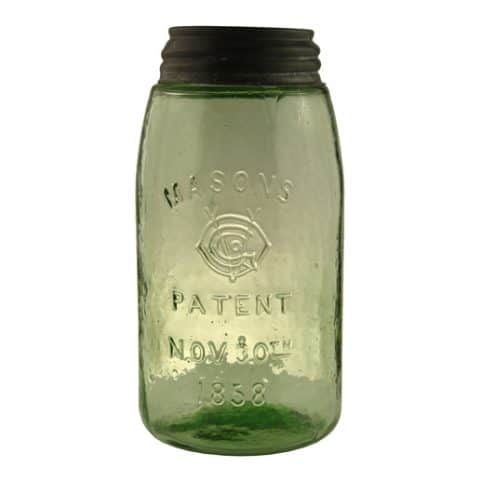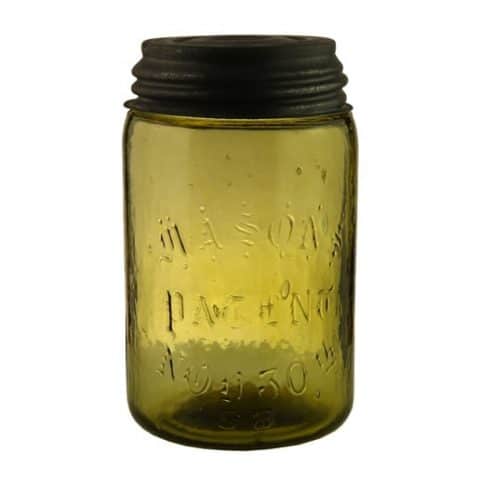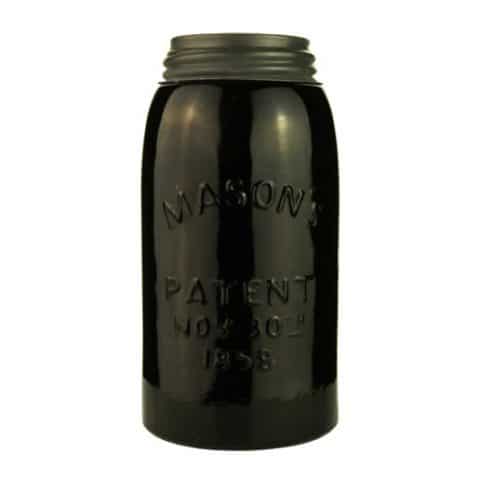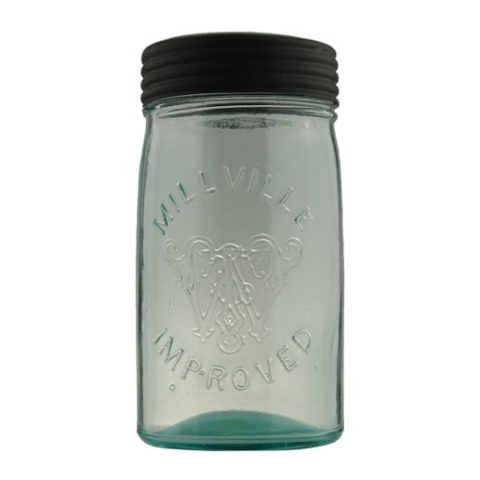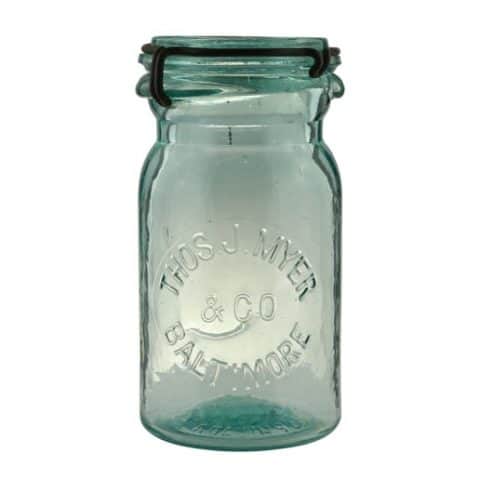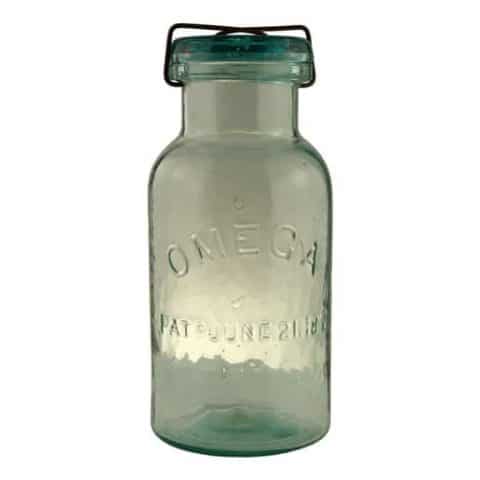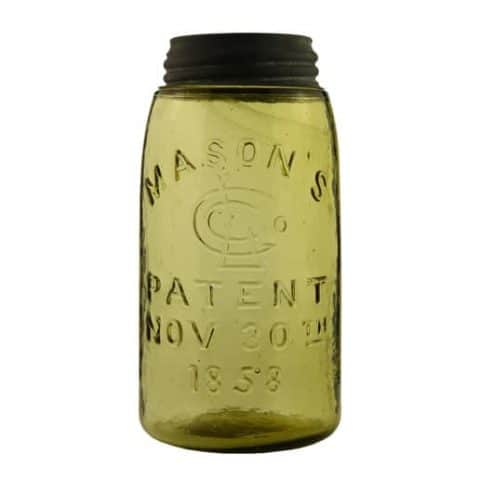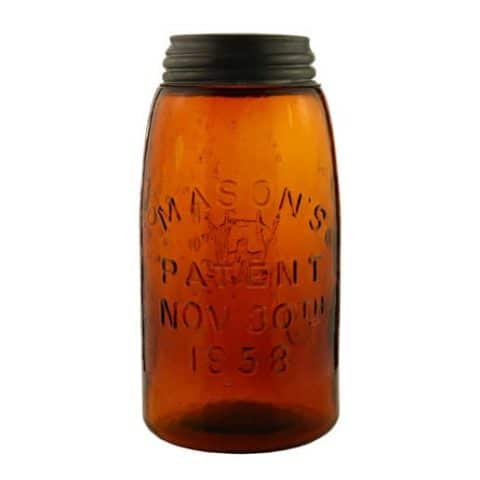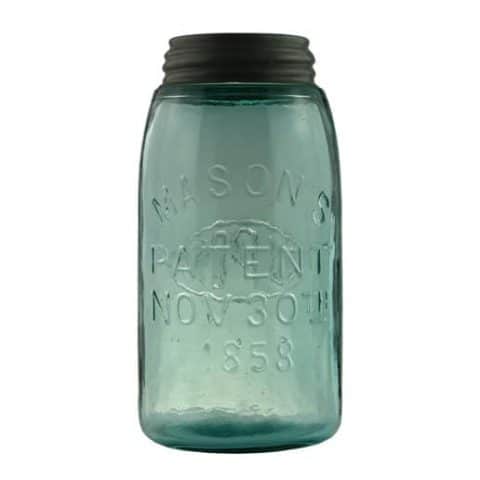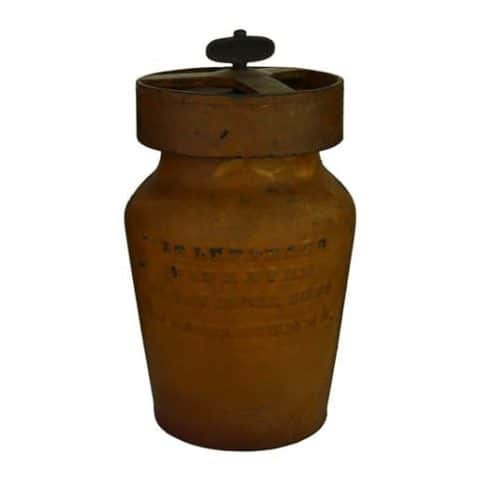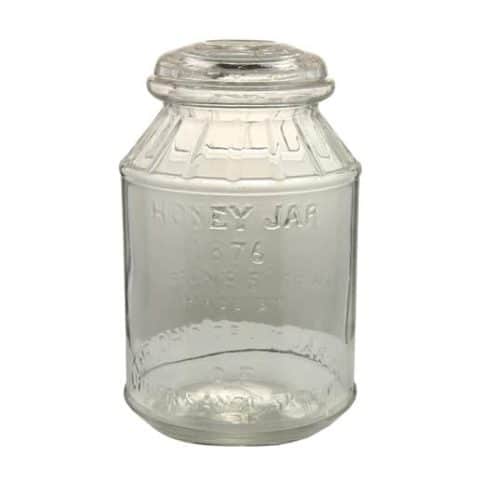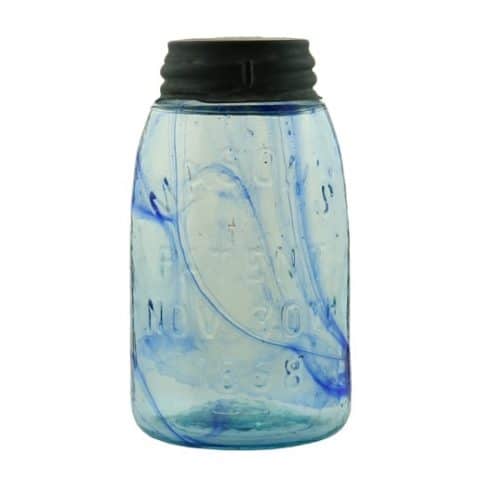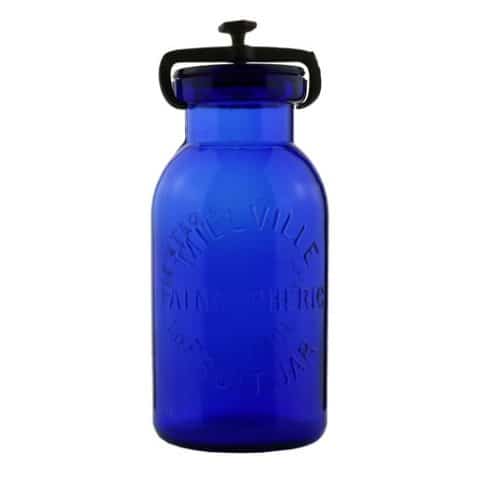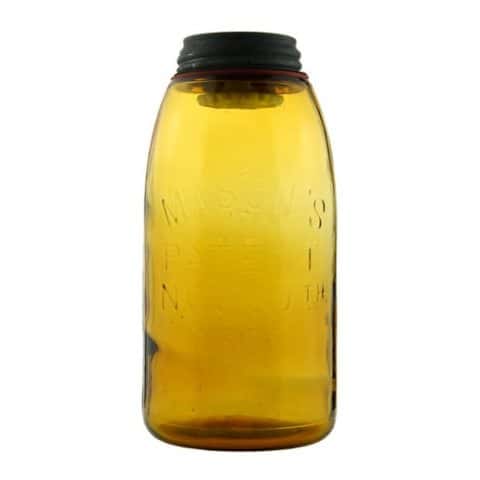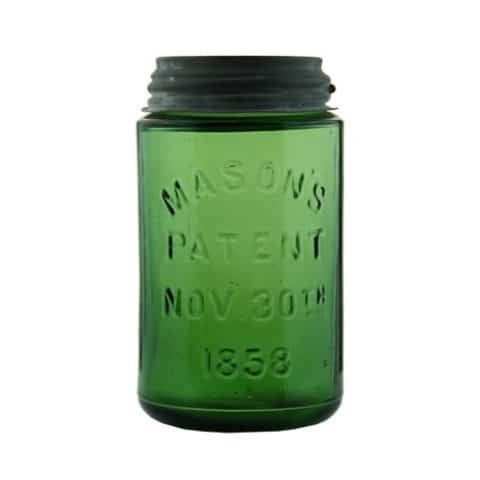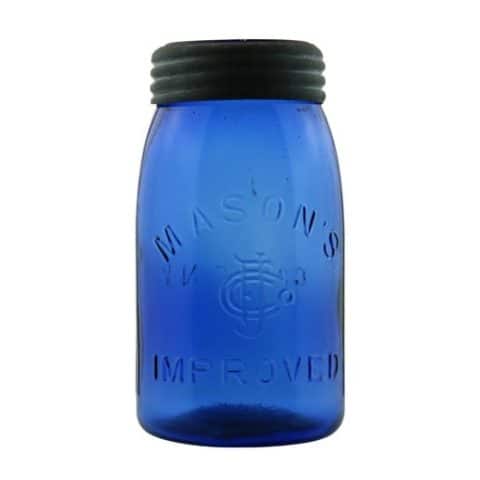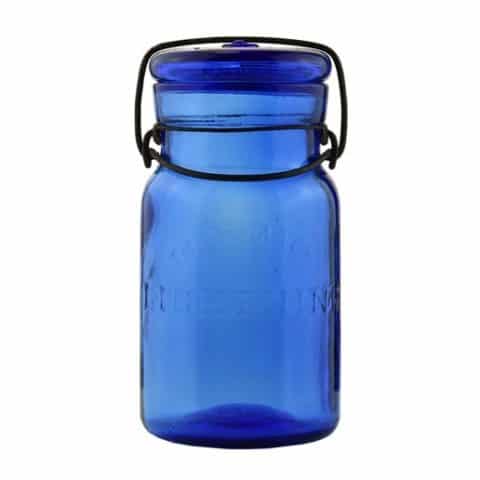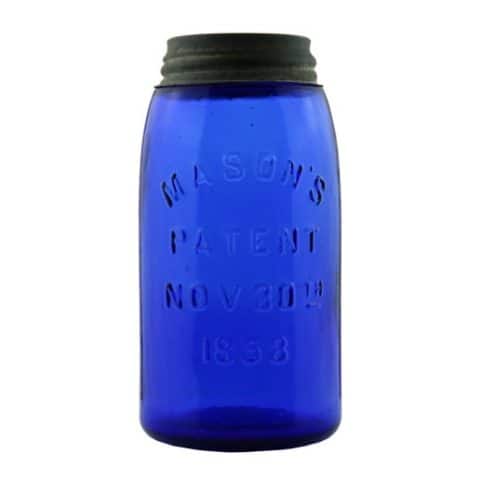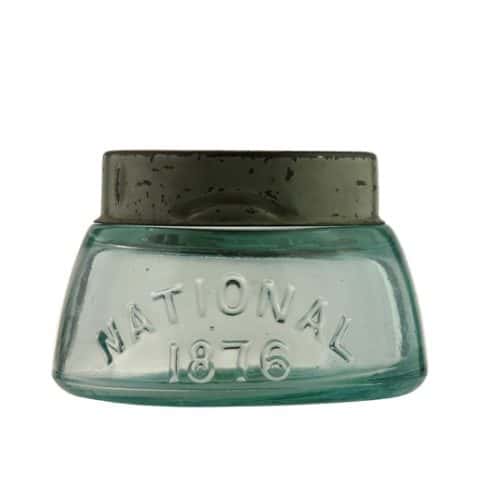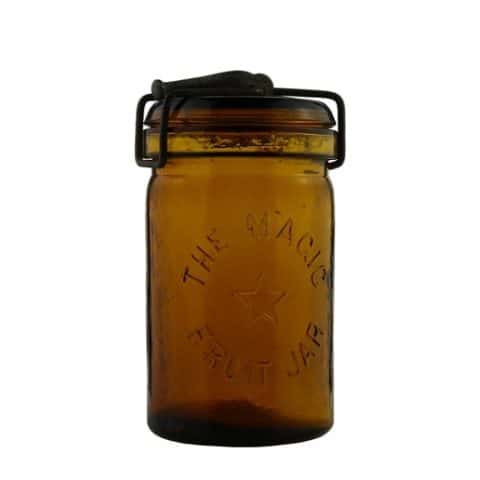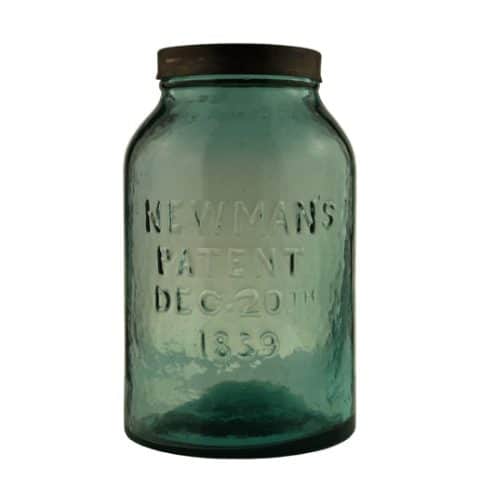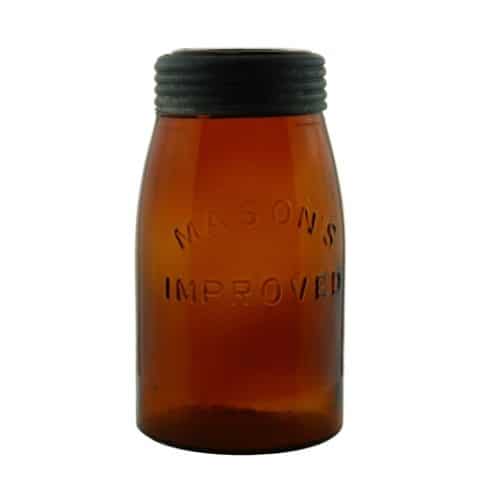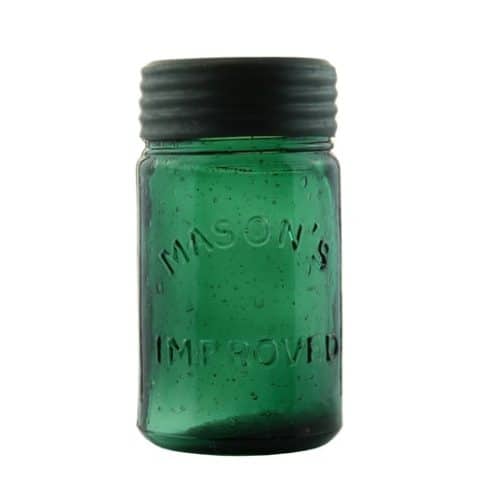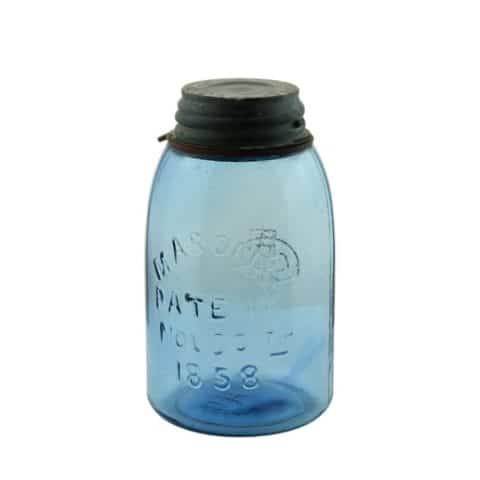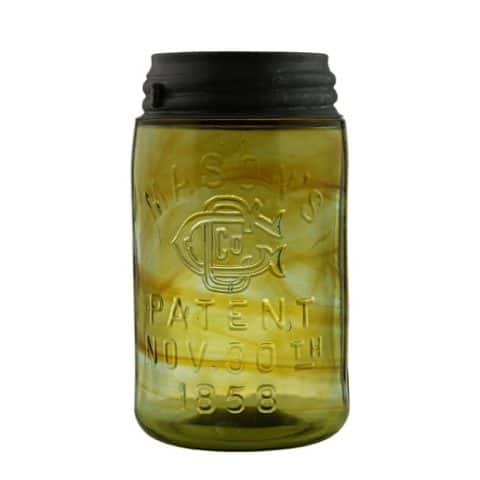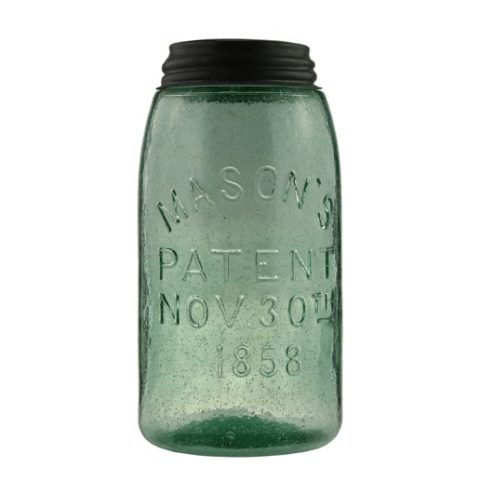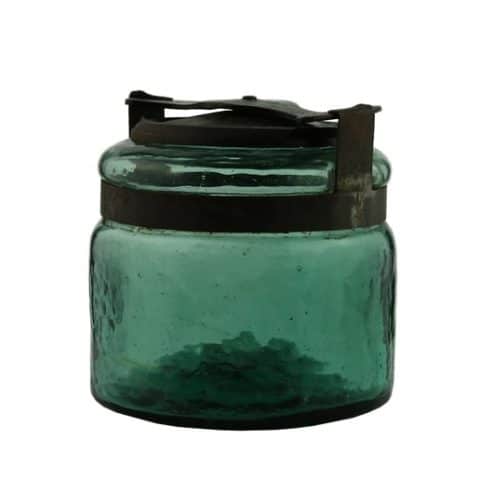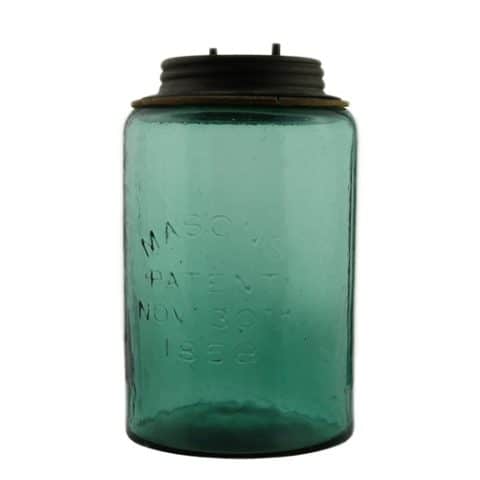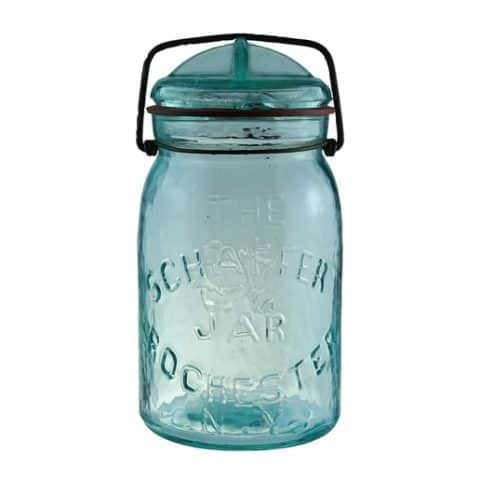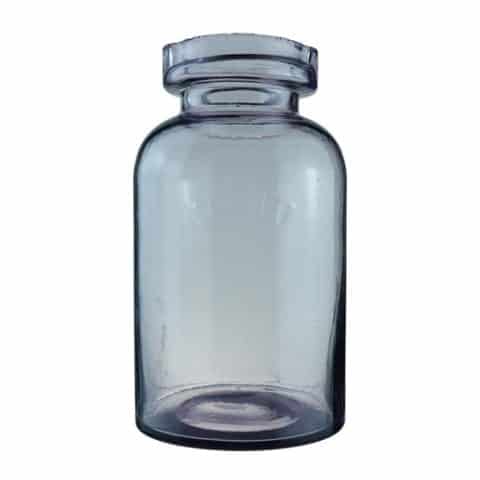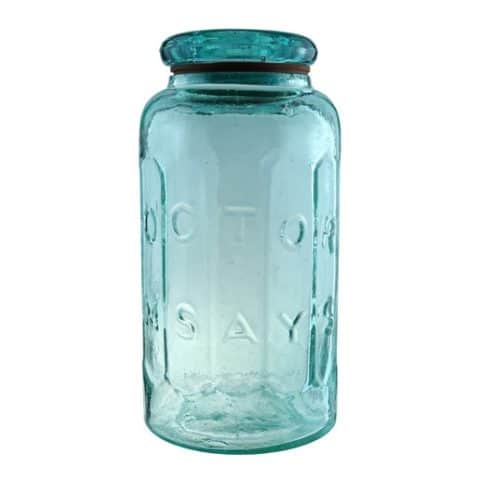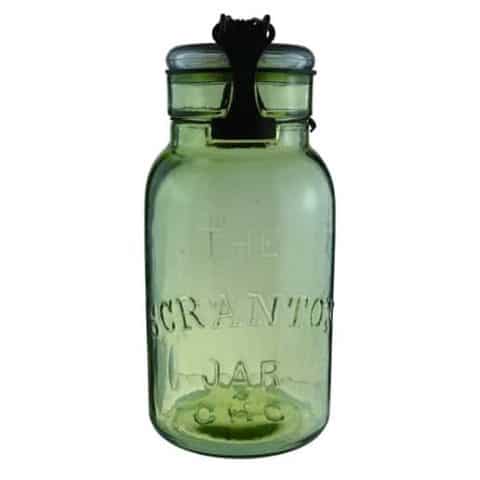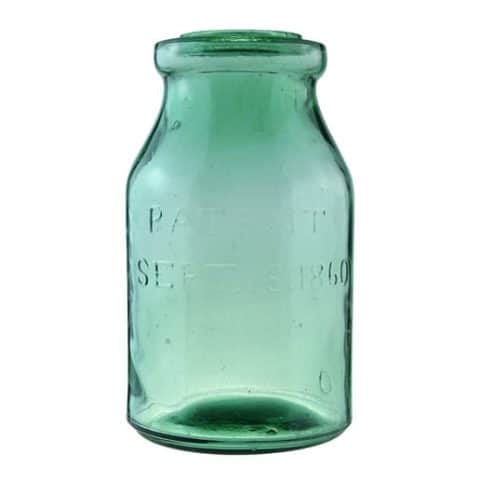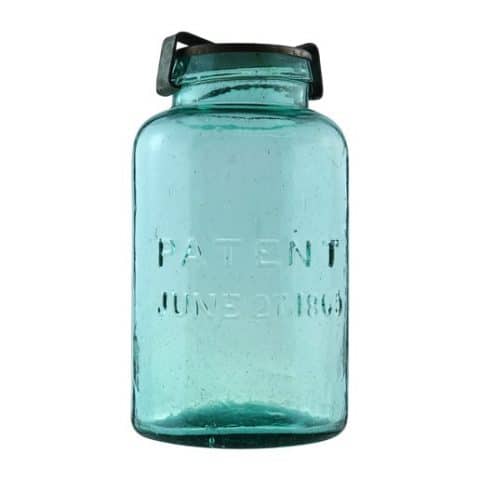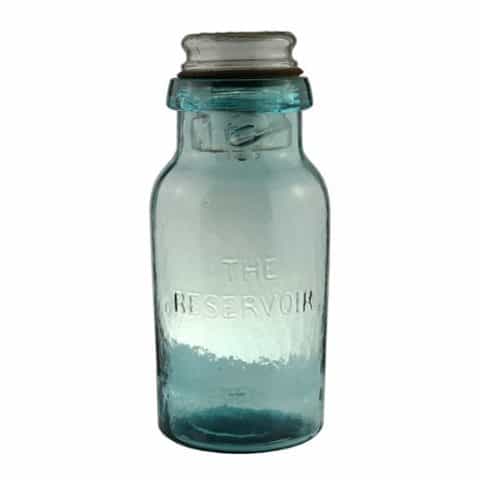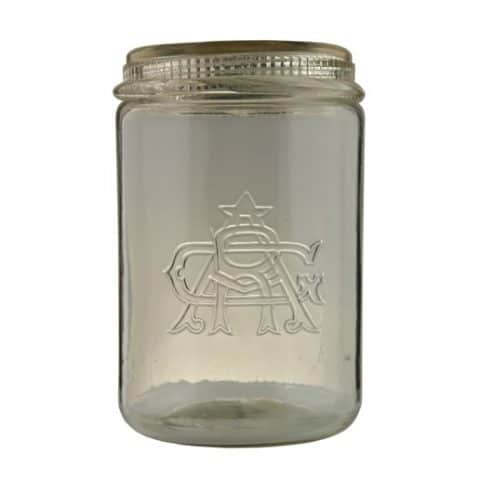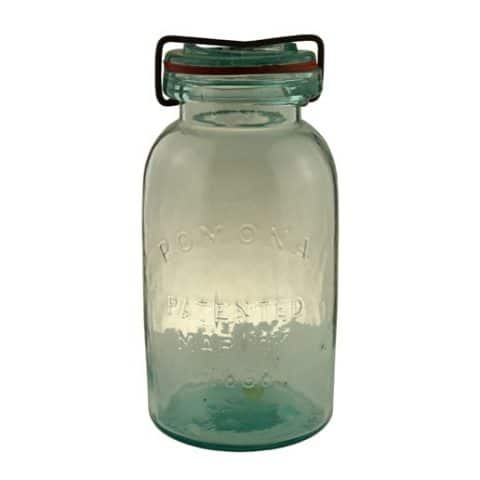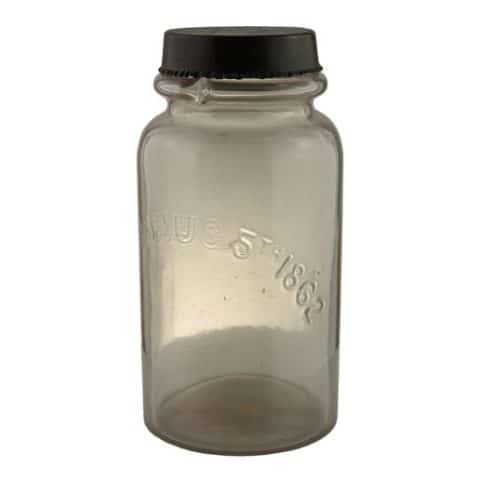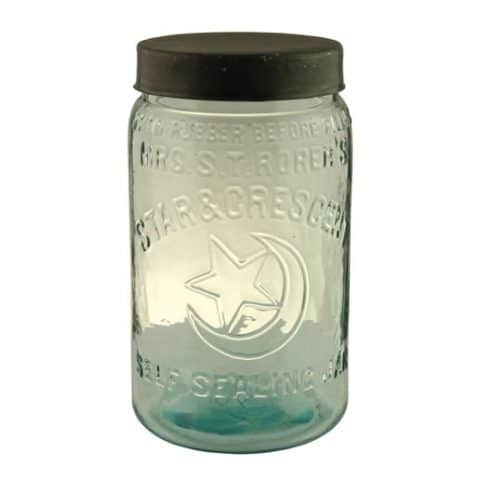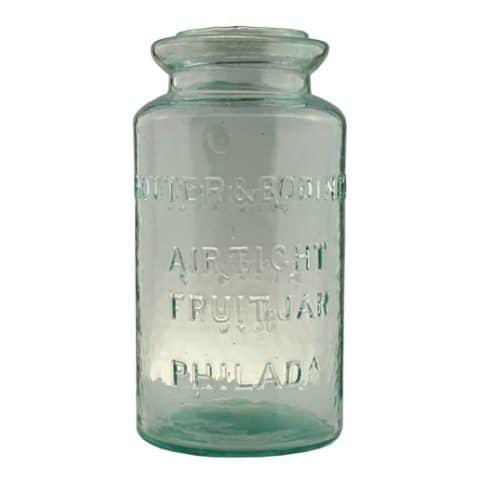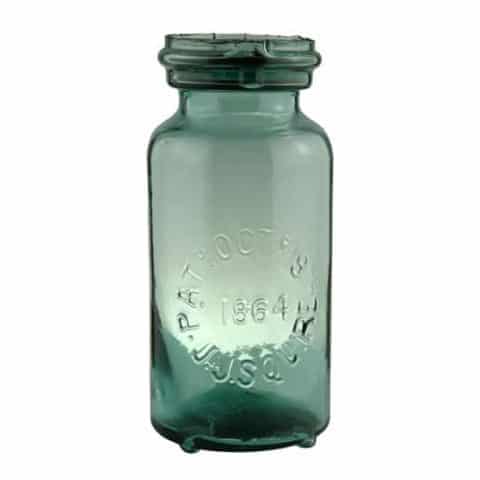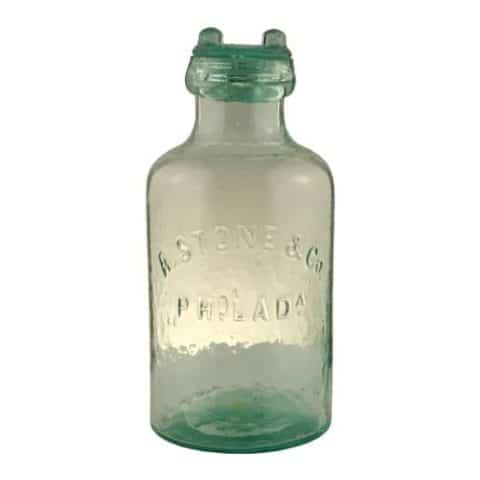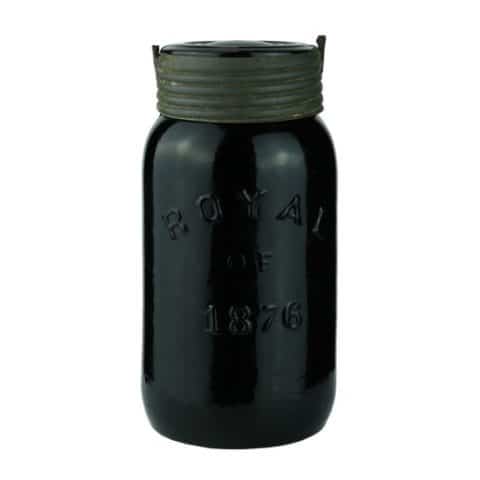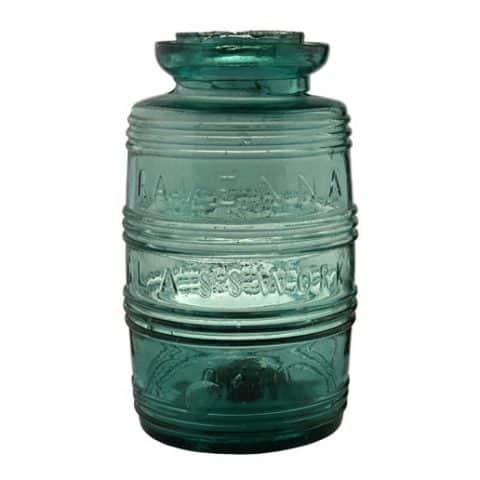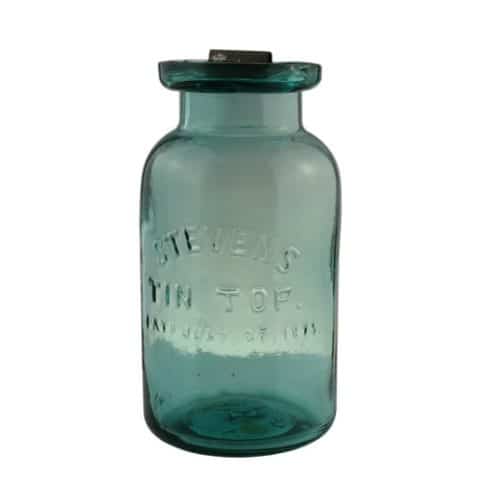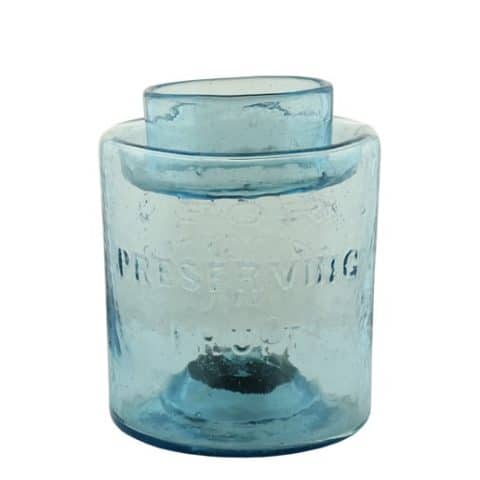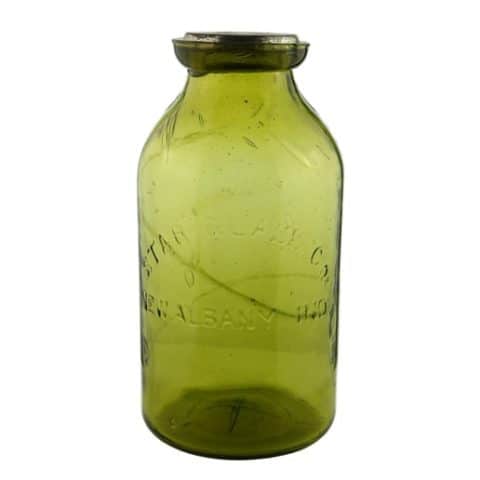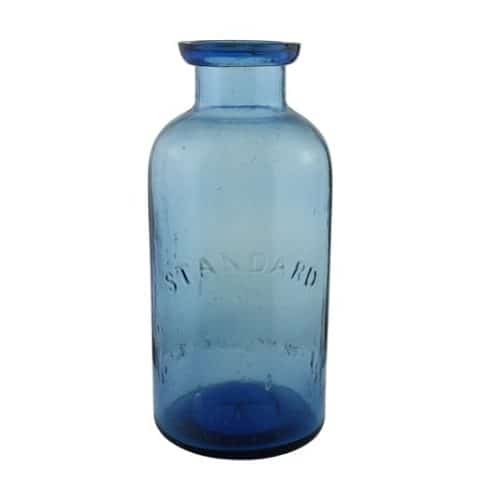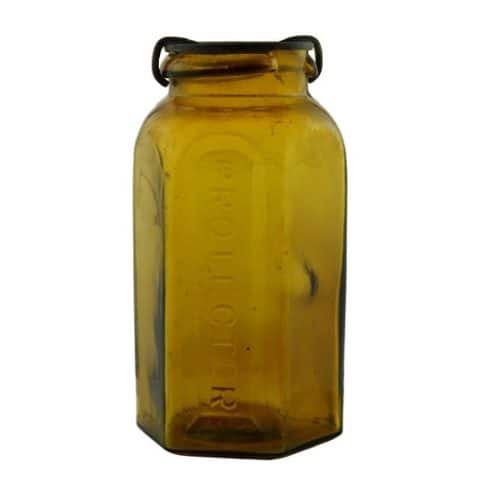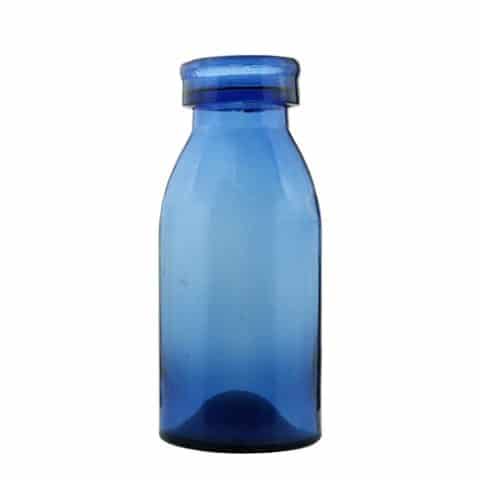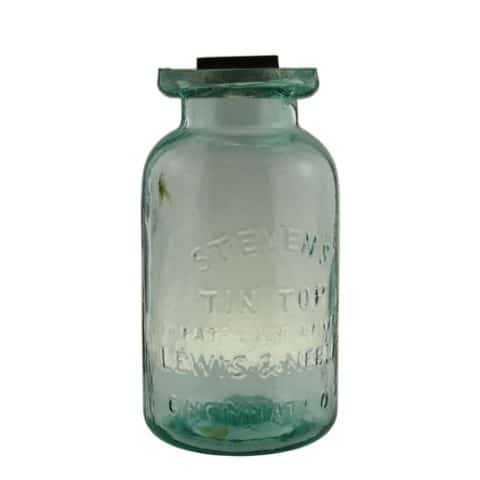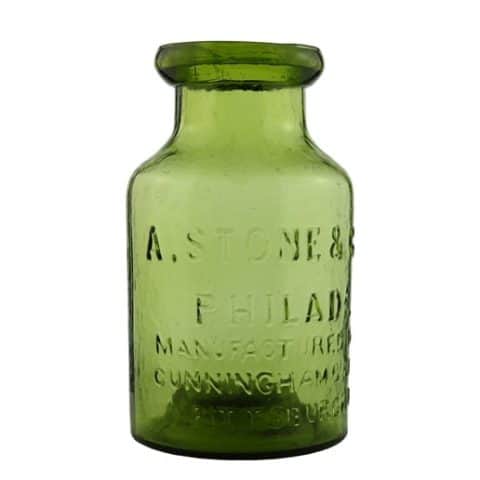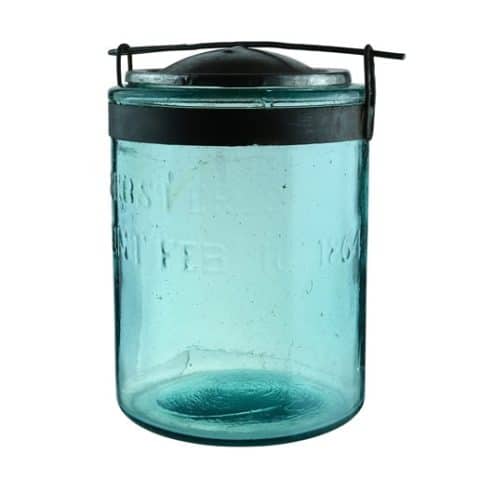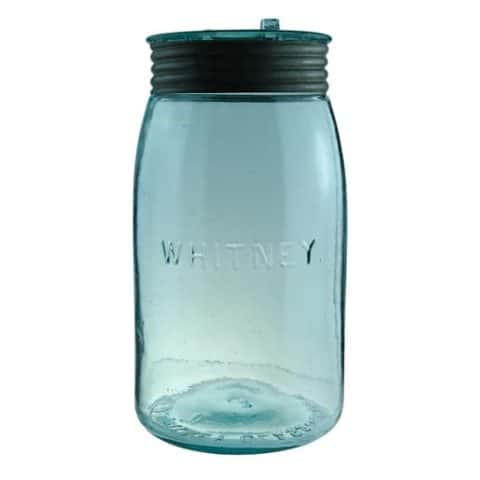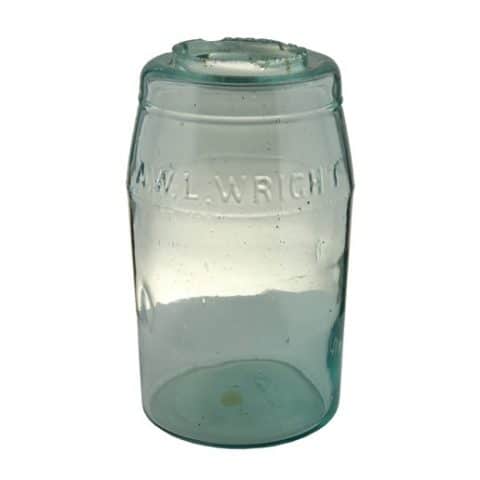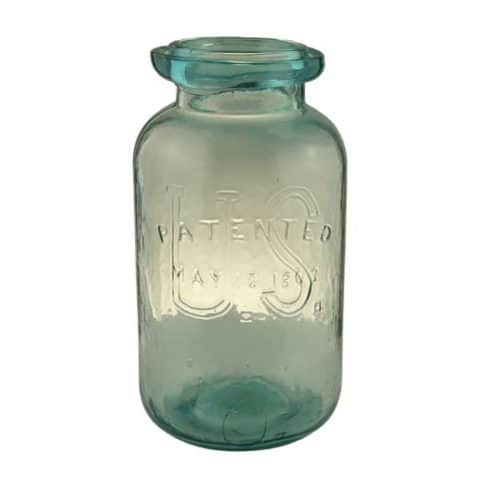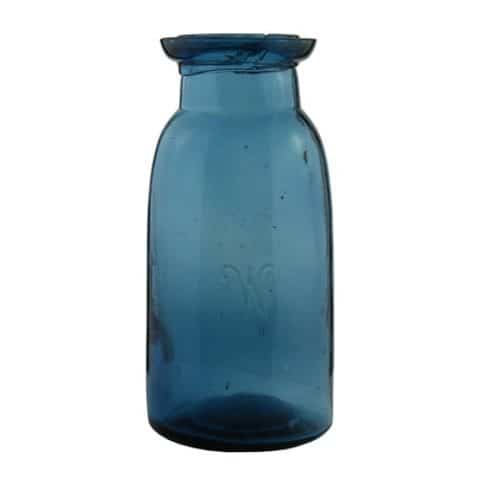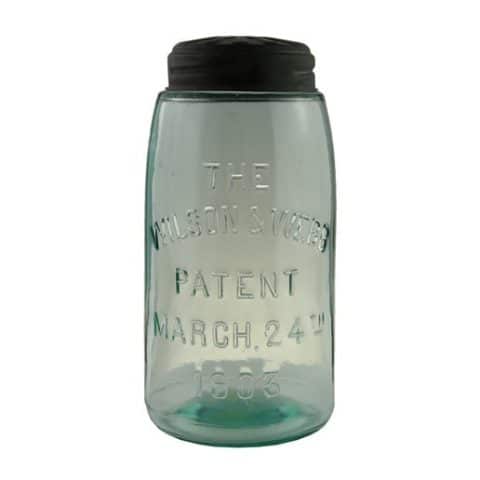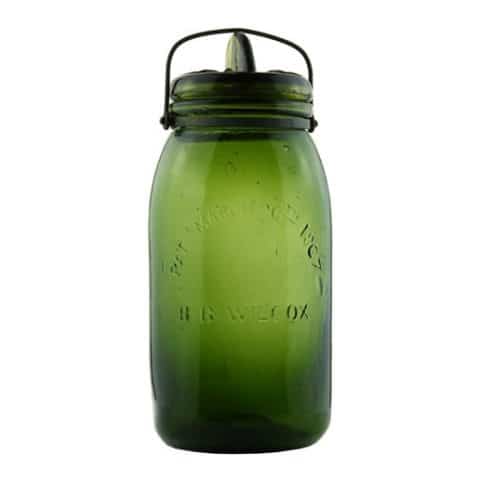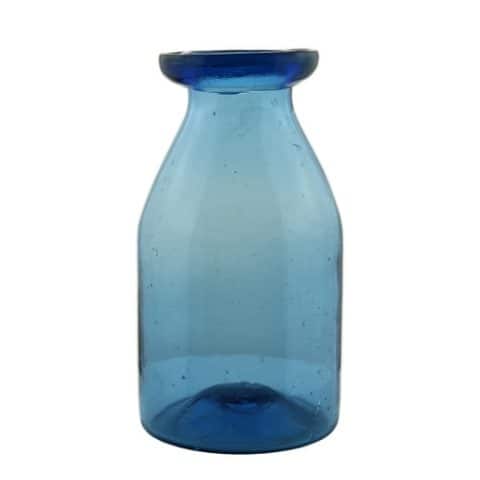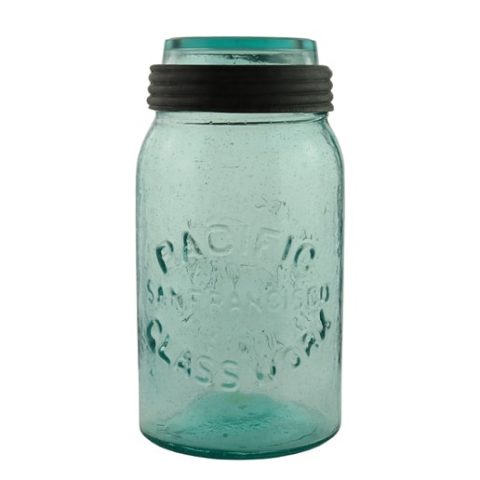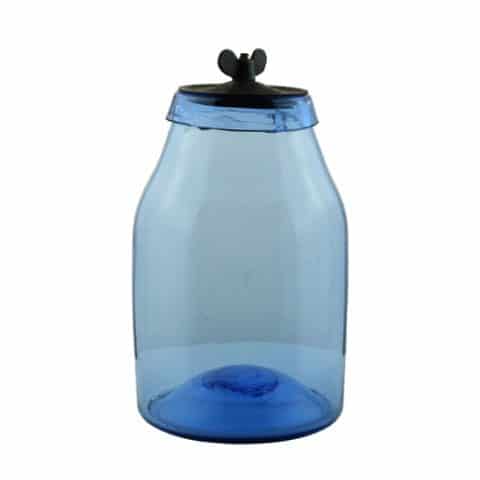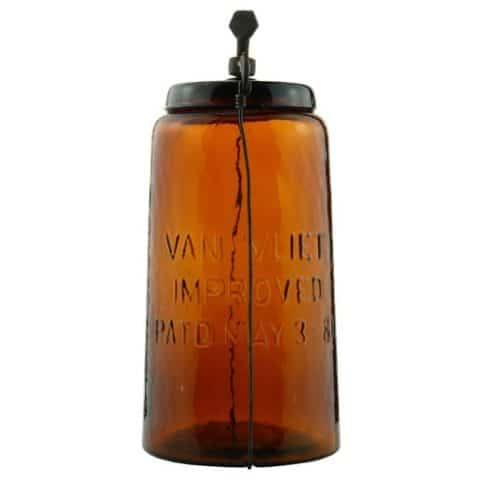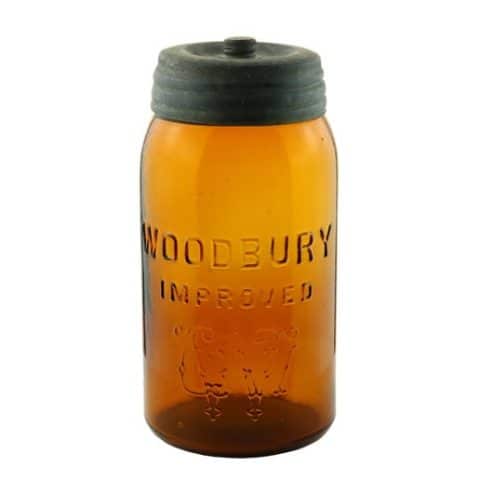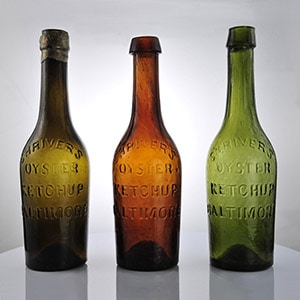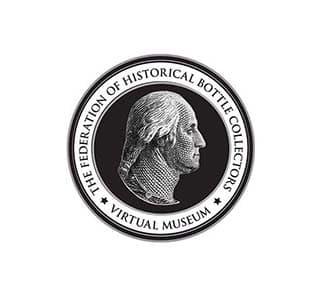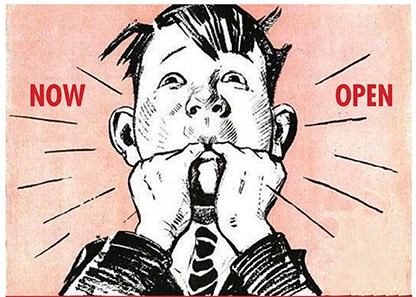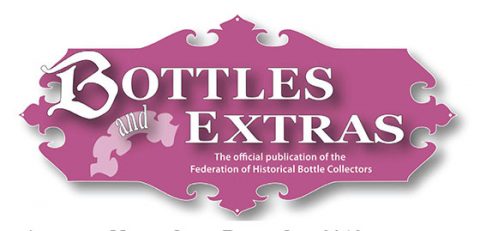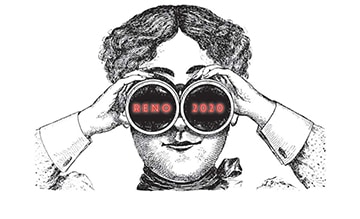Cunningham Pittsburgh Pa
Cunningham & Co.
Pittsburgh
Cunningham & Co., Pittsburgh, Pennsylvania
Pittsburgh City Glass Works
Light Green Pint
Provenance: Phil Smith Collection
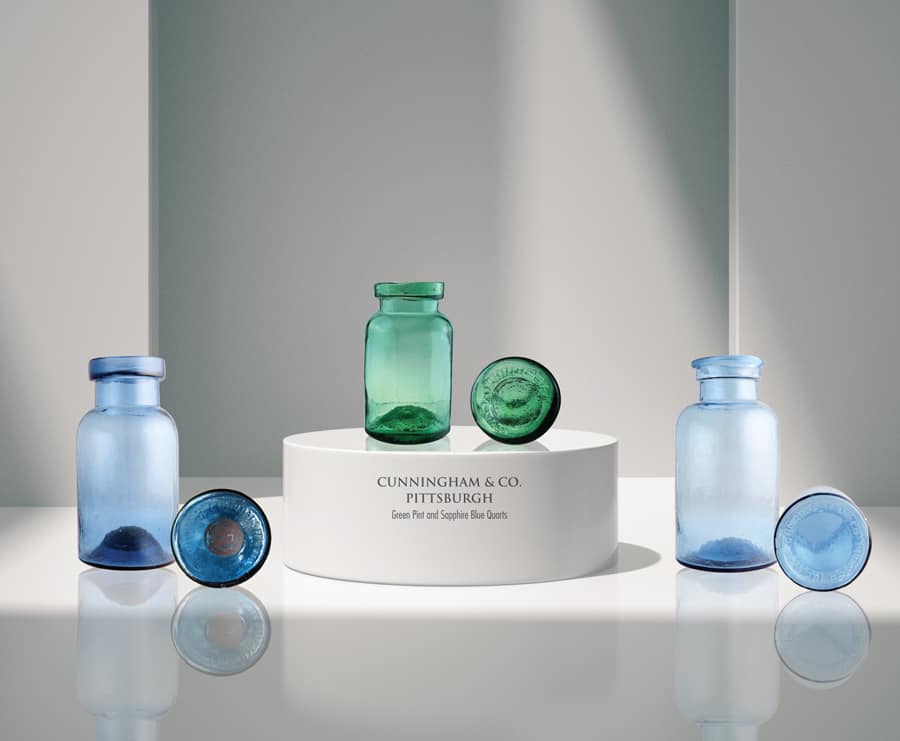
Our base embossed Cunningham & Co. jar was made in Pittsburgh, Pennsylvania, in the 1850s. Our example represents a crudely-made hand-blown, applied collar jar in a beautiful light green glass with a blue tone. The closure is uncertain but was probably a waxed cork. The glass color in a pint is unlisted.
The base of the green pint is embossed ‘CUNNINGHAM & CO.’ in a serif typestyle in a convex arch. ‘PITTSBURGH’ completes a typographic circle motif in a concave manner surrounding the large domed iron pontil. The embossed “Pitt” and “& Co.” are barely discernable and are somewhat lost in the mold. The heavy jar has a pronounced shift in glass thickness that you can see when looking at the base. Red Book lists a citron quart and an aquamarine pint in this jar. No citron or green pint is noted
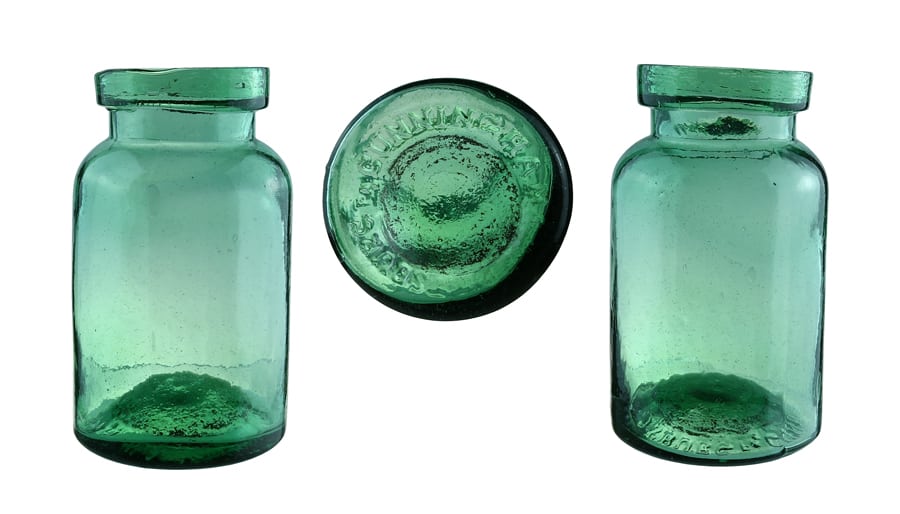
In a sapphire blue quart, this rare jar is also represented in the museum with two different molds and different collars. The applied square collar example is iron pontiled and embossed ‘CUNNINGHAM & CO. PITTSBURGH.’ The second example is smooth-based and has ‘CUNNINGHAM & CO. PITTSBURGH PA.’ embossed on the base. This jar has an applied collar with a rolled lip.
Cunningham & Co., Pittsburgh, Pennsylvania
The Cunningham family owned, either entirely or in part, five glass companies, all in Pittsburgh, Pennsylvania. Three of these were noted by distinctive marks on bottles.
In 1845, Wilson Cunningham and George Jackson began a window-glass and bottle factory on Water Street in Pittsburgh. In 1849, brothers Wilson and Robert Cunningham and George Duncan formed Cunningham & Co. A later Cunningham advertisement in 1892 notes “established 1849,” indicating that the Cunningham family considered 1849 the initial date of their glasshouse formation, which was sometimes referred to as Pittsburgh City Glass Works. Jackson withdrew from the company sometime around 1857, when the company was experiencing financial difficulties.
Jar production most likely started in 1850, along with green and black glass bottle production. Reference material notes that one of their first jars was embossed on the base “Cunningham & Co. Pittsburgh” in a Rickett’s mold around a concave center. In cross-section, the Rickett’s mold was sloped inward toward the center of the base, similar to the whiskey bottles made during the 1820s to 1850s. Each jar had curved shoulders and a comparatively thin neck, with a squared, single-ring finish. The closure was uncertain and was probably a relatively thin waxed cork covered by a wax-like substance.
By 1866, Dominick Ihmsen had joined the company causing a name change to Cunningham & Ihmsen. By 1872, the glasshouse included a dozen buildings and took up three city blocks between 26th and 27th Streets and Mary and Jane Streets. Another segment was between 25th and 26th Streets and Harcums Alley and Mary Street. That year, the glasshouse made vast quantities of soda bottles and fruit jars, wine bottles, druggists’ ware, flasks, and demijohns.
When Ihmsen retired in 1878, Dominec Cunningham, Wilson Cunningham’s son, joined the firm, and the name was changed to Cunninghams & Co. You will see both “Cunningham” and “Cunninghams” used with this glasshouse. David Cunningham died in 1864, and Duncan withdrew from the firm in 1865. Various reiterations of the glasshouse would exist up until the early 1900s.
See the museum example of an “A. Stone & Co. Philada. Manufactured By Cunninghams & Co Pittsburgh Pa jar.
See the museum example of a Heroine Fruit Jar made by Cunninghams & Ihmsen.
Primary Image: The green base embossed pint “Cunningham & Co. Pittsburgh” jar imaged on location by Alan DeMaison, FOHBC Virtual Museum Midwest Studio
Secondary Image: Sapphire blue quart with square collar. Iron pontil dome on base. Base embossed “Cunningham & Co. Pittsburgh” – Darrell Plank collection.
Secondary Image: Sapphire blue quart with square collar and rolled lip. Smooth base. Base embossed “Cunningham & Co. Pittsburgh Pa. – Darrell Plank collection.
Support Image: Auction Lot 133: Emerald/moss green, quart, base embossed “CUNNINGHAM & Co. PITTSBURGH”, applied galleried rim, domed base with iron pontil mark. With later Victorian painted decoration. 8″ H., Mid 19th century. Undamaged except for a light 1/4″ crescent-shape refraction below the shoulder with no impact mark, possibly as made, several short scratches to the exterior. Leybourne – Fruit Jars Red Book 9, p. 102, no. 721. Recently discovered in Ohio. This color is not listed by Leybourne. – Jeffrey Evans, Jeffrey S. Evans & Assoc., May 22, 2019
Support Image: Auction Lot 62: “Cunningham & Co Pittsburgh Pa” Base Embossed Fruit Jar, Cunningham and Company, Pittsburgh, Pennsylvania, 1845-1860. Cylindrical, deep aquamarine, applied square collared mouth – iron pontil mark, ht. 6 inches. L #723-1 Great pontil scar. Fine condition. Unlisted. – Norman Heckler Jr. & Sr., Norman C. Heckler & Company, Auction #110
Support: Reference to Cunningham Family Glass Holdings by Bill Lockhart, Beau Schriever, Bill Lindsey, and Carol Serr with contributions by Jay Hawkins and David Whitten
Support: The Dating Game by Bill Lockhart, David Whitten, Bill Lindsey. Jay Hawkins and Carol Serr by Bill Lockhart, 2004, FOHBC Bottles and Extras, Summer 2005
Support: Reference to Fruit Jar Annual 2020 – The Guide to Collecting Fruit Jars by Jerome J. McCann
Support: Reference to Red Book #11, the Collector’s Guide to Old Fruit Jars by Douglas M. Leybourne, Jr.
Join the FOHBC: The Virtual Museum is a project of the Federation of Historical Bottle Collectors (FOHBC). To become a member.

